You are using an out of date browser. It may not display this or other websites correctly.
You should upgrade or use an alternative browser.
You should upgrade or use an alternative browser.
Bridge, MFT, achromats, dSLR, primes - a journey of exploration
- Thread starter GardenersHelper
- Start date
- Messages
- 3,739
- Name
- John
- Edit My Images
- Yes
I have RTM this post to try and get Mods to make it sticky... as there are lots of other post around the site like Which Macro lens without people realising there are other options than spending £100's on 1:1 lenses.
You tell them Bryn (the Mods)

GardenersHelper
In Memoriam
- Messages
- 6,344
- Name
- Nick
- Edit My Images
- Yes
I have RTM this post to try and get Mods to make it sticky... as there are lots of other post around the site like Which Macro lens without people realising there are other options than spending £100's on 1:1 lenses.
I don't think making this a sticky would be the way to go Bryn. This is a long, complicated ramble, which gets quite technical in places, and is based on one person's rather untypical take on things. I think what newcomers need is something short that gets straight to the point, for example, A Beginners Guide to Macro, which is linked from the stickied Macro Photography Tutorials & Guides at the top of this forum. I think you could argue that something with a bit more in it might be a good idea (like distinguishing between closeup filters and achromats, explaining reversing rings, perhaps referring to the also stickied Show us your macro rig thread and possibly some other stuff). But I think something like that would be the way to go; either the existing A Beginners Guide to Macro, or a new but similar and bit more extensive post, if someone wants to write it and submit it to the mods for linking from the Macro Photography Tutorials & Guides thread.
I know you are enjoying reading this thread, possibly as much as I'm enjoying writing posts for it, and you are very enthusiastic about it, which is obviously rather pleasing for me, but if someone is eager to start and wants a run down of the options and things to beware of/be aware of, I don't think it would be fair to point them at this thread and expect them to dig out what they need from it.
GardenersHelper
In Memoriam
- Messages
- 6,344
- Name
- Nick
- Edit My Images
- Yes
I've been reading and keeping up to date with this. TBH I'm astounded by the quality and standard of the final photos, the way they have been shot and the equipment and combinations used. Inspirational
Thanks so much Jim. If this encourages anyone out there to try closeups for themselves, or get back into it (I know I've lost interest from time to time), or try new approaches, subjects, equipment or whatever, then I'm delighted.
GardenersHelper
In Memoriam
- Messages
- 6,344
- Name
- Nick
- Edit My Images
- Yes
The journey continues. There's good news, and bad news, and mixed news that has left a bit of a muddle in my head, and a degree of frustration, annoyance and demotivation.
First, the bad news. I thought I had it all worked out - the 70D for natural light shots, which would be flowers and larger invertebrates, and the FZ200 for flash shots, which would be all the shots of the smallest invertebrates, and some middle sized invertebrates. This left experiments to do to work out which camera to use for middle sized invertebrates using natural light, where the potential problem with the 70D was the large size of its autofocus box, which might mean I couldn't get the accuracy I need in placing the centre of focus exactly where I want it when using autofocus.
Since coming to these conclusions I have had another session at one of the nature reserves. The air was very still and I used natural light with the 70D almost the whole time. The subjects were mainly middle sized invertebrates. I haven't worked through the images from the session yet, but I got the strong impression that I could probably live with the large focus box. This would leave me using the FZ200 just for flash work.
This was based on the fact that I couldn't get flash to work satisfactorily with the 70D (or the G3 for that matter), while flash worked without much problem on the FZ200. Recently though, there have been two significant developments. First, the bad news: the FZ200 started giving me problems of inconsistent results of the sort I was getting with the 70D and G3, and also requiring higher ISOs some of the time. This made me think that if I was going to get these sort of problems anyway, and as it now seemed that the large focus box wasn't as much of a problem as I thought it would be, why not have another go at using flash with the 70D? So that's what I did yesterday for a little while in the garden.
And here we get to the good news. It's not perfect (but then again neither are the alternatives), but I can get some half decent results using flash for middle sized invertebrates with the 70D. The first example is a modestly sized fly. It was a difficult subject because it was very dark, and on a rather light background. Here is how one of the images looked "out of the camera" (i.e. with the minimalistic RAW import settings I use in Lightroom.)

IMG_6208 Export 800w by gardenersassistant, on Flickr
It doesn't look good, but I'm quite impressed by how much information the 70D captures, enough to produce a (IMO) passable processed image in this case.

0551 03 2014_04_17 IMG_6208-Edit-5-Edit PS1 PSS3 by gardenersassistant, on Flickr
Another thing I had been concerned about with the 55-250 on the 70D was the fact that the lens extension would make it more difficult to do series at different magnifications. Perhaps it was because I was working hand-held out in the garden yesterday, but it turned out not to be much of a problem with middle sized subjects. Here are the first and last shots of a series as an example (btw, you might think that this is an unfair comparison because the subject is, unusually for me, on a firm surface. But in fact, the thing it is on has an interesting and variable relationship to the vertical, and was swaying a lot in the breeze.)
Moving the magnification up and down more or less at random, I captured a number of shots between this...
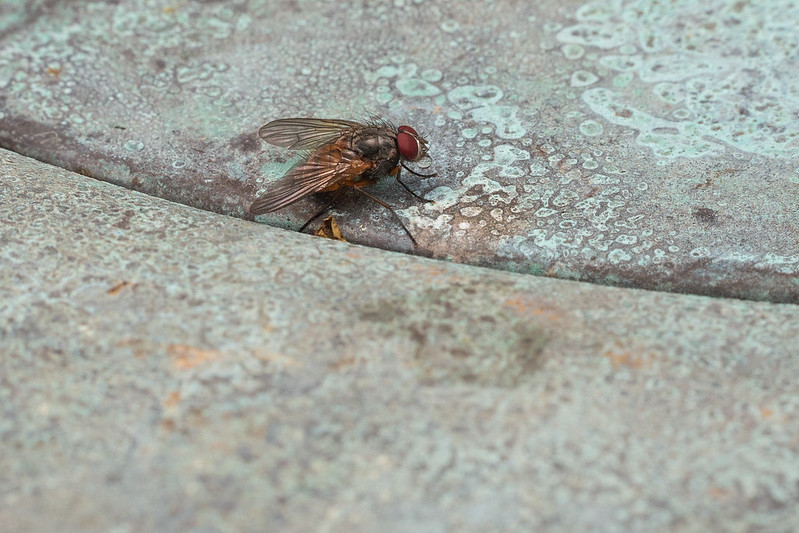
0551 10 2014_04_17 IMG_6370-Edit PS1 PSS3.75 by gardenersassistant, on Flickr
and this, which is as close as I wanted to get from that angle ...
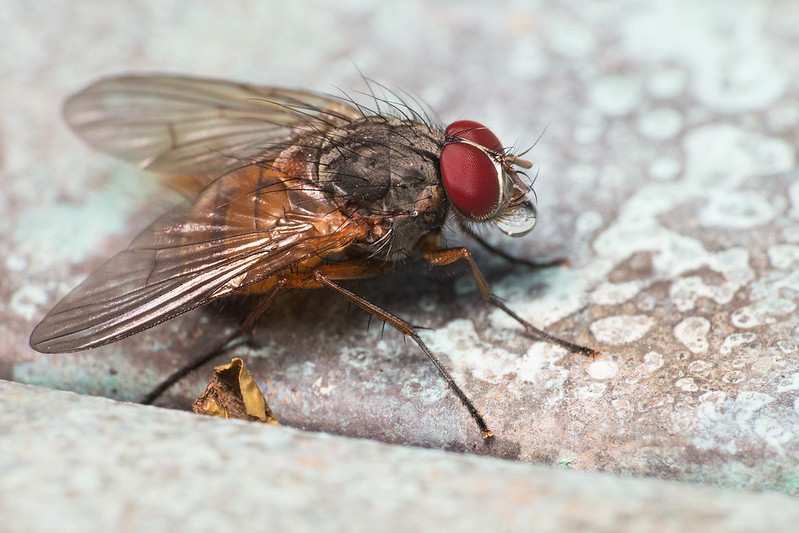
0551 16 2014_04_17 IMG_6367-Edit PS1 PSS3 by gardenersassistant, on Flickr
These used the Raynox 250 on the 55-250 mm and the first was at 55mm and the second at 163mm. Here is one from a different angle using the full 250mm.
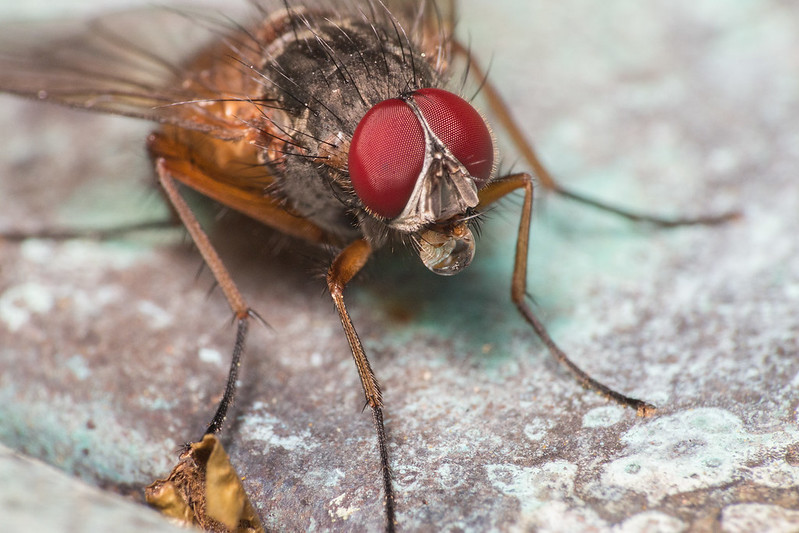
0551 17 2014_04_17 IMG_6393-Edit PS1 PSS3 by gardenersassistant, on Flickr
Encouraged by this success, I decided to try using the 70D, with flash, on small subjects. I tried a springtail (not one of the tiniest ones, but quite small all the same). I used the Raynox 150 and 250 stacked. I took 32 shots, trying both manual and autofocus, but nothing seemed to work - the leaf was moving a lot in the breeze, and the springtail was rushing around the whole time, but even so I was disappointed. I wandered off to look for other subjects. When I came to look through the images on the PC I first thought there were no usable ones there - some were quite close but not quite there I thought. Having done the selection and processing for the day's images and started writing this post, I decided to check the springtail images, just to make sure there was nothing I could use. I came to the conclusion that with a bit of cropping, one of them might be just good enough. As with the information needed to bring up the shadows, 70D images have more detail information "under the surface" than the FZ200 (hardly surprising, with a sensor with 10 times the area), and so cropping is a more practical proposition.
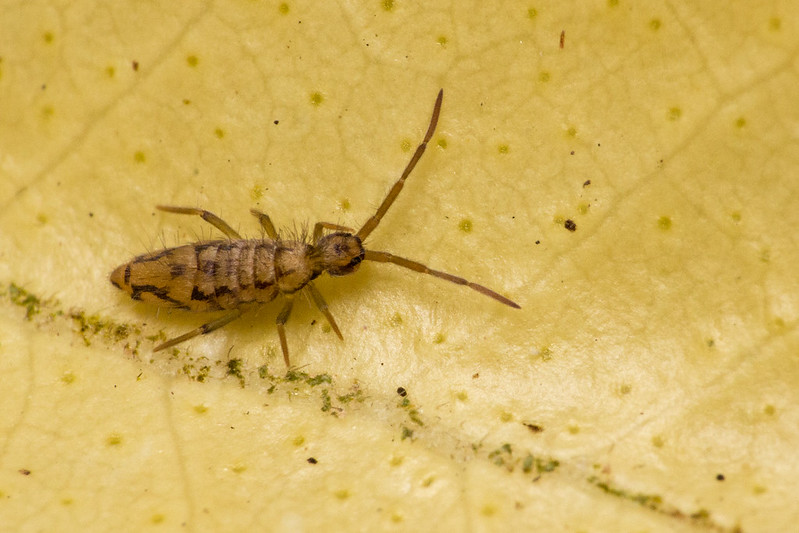
0551 36 2014_04_17 IMG_6406-Edit PS1 PSS3 by gardenersassistant, on Flickr
But despite the better information capture with the 70D, you have to capture the image in the first place. And after the apparent failure with the springtail I got out the FZ200, with flash of course. I was once again struck with how much lighter it is than the 70D, and how much easier and faster it is to use. This includes the LCD being much clearer about whether you are in the appropriate working distance range, the camera being much less "fussy" about the distance to the subject (which is a shot-loser with the 70D), and having much more accurate focus placement and reliable focus acquisition at the intended location. I used the FZ200 to try to capture images of an ant as it scurried around. None of the shots worked out to my satisfaction, but I didn't spend a huge amount of time trying, and I'm sure that I would have had much less success, and quite possibly none at all, with the 70D. I didn't know which of the imperfect shots to use as an illustration as I don't really feel comfortable with any of them, but here's one anyway.
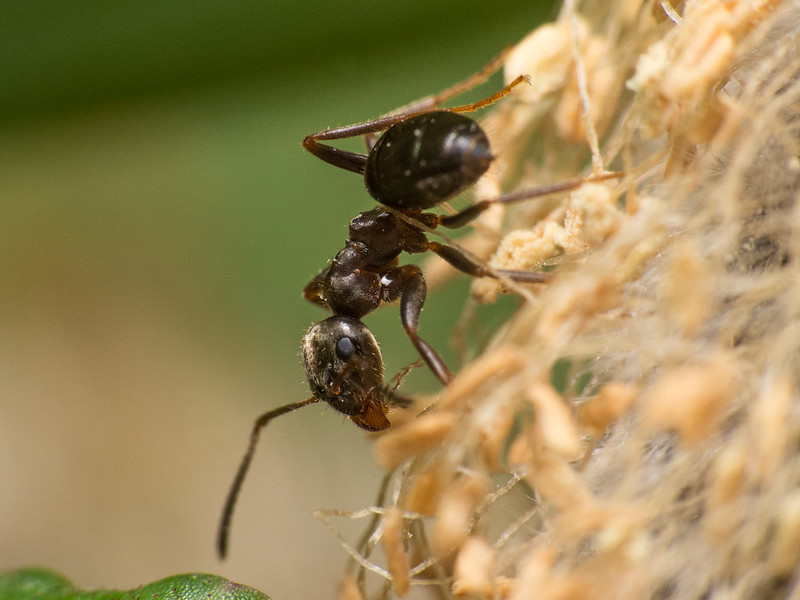
0551 20 2014_04_17 P1260699-Edit PS1 PSS3.86 by gardenersassistant, on Flickr
And the mixed news, and the muddle in my head?
Well, today I went into the garden for a little while with the 70D and FZ200. I didn't find much I wanted to photograph (well, yes, there was plenty available, but I wasn't in the mood for any of it), so I played around with the flash on both cameras. Oh dear. For the examples shown above I had been photographing scenes that were quite light in colour. (The subject was very dark in the first one, but overall the scene was quite light.) When I tried to photograph a darker scene today, some foliage in the shade, I had to turn the ISO up to 1600 on the 70D. And then I discovered that another shady scene that was adequately illuminated by flash at minimum magnification was unusably dark at maximum magnification. This was the case both for my polystyrene bowl diffuser, which does cut down the light a fair bit, but also another diffuser which doesn't cut out as much light. So the mixed news is that sometimes I can use flash successfully with the 70D. And sometimes I can't.
And the muddle in my head? I no longer have a clear idea of what (I think, rightly or wrongly) works and what doesn't, and what kit and settings to use when it comes to using flash. It seems to have got horribly complicated and confusing, again. Oh, did I mention that the flash TTL metering doesn't seem to work reliably with the 70D? Maybe it doesn't with the FZ200, I don't know. I've lost track. Perhaps I'll just use manual flash.
Perhaps these ongoing complications are the reason I keep going back to botanical subjects; they seem to be much more straightforward to deal with, and seem to be offering me more creative possibilities. I enjoy creating images like this, I enjoy processing them and I enjoy looking at them afterwards.
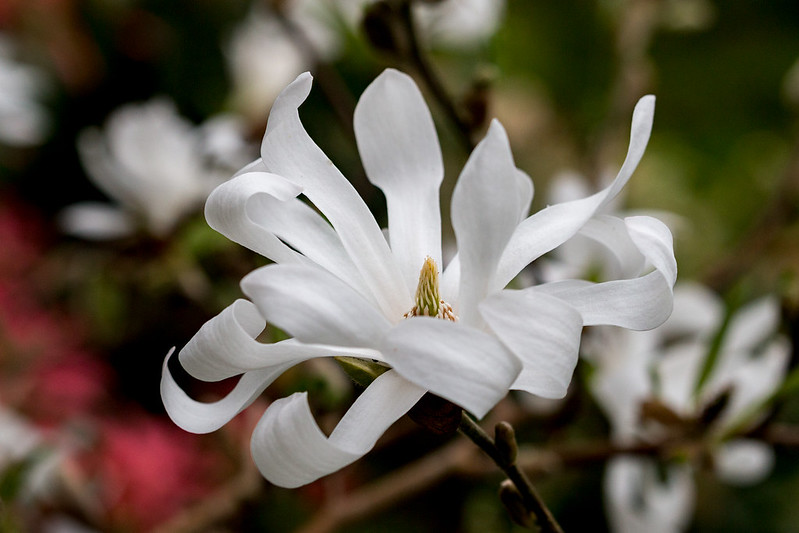
0551 33 2014_04_17 IMG_6602-Edit PS1 PSS3.19 by gardenersassistant, on Flickr
In contrast, dealing with invertebrates feels like a hard slog just at the moment.
First, the bad news. I thought I had it all worked out - the 70D for natural light shots, which would be flowers and larger invertebrates, and the FZ200 for flash shots, which would be all the shots of the smallest invertebrates, and some middle sized invertebrates. This left experiments to do to work out which camera to use for middle sized invertebrates using natural light, where the potential problem with the 70D was the large size of its autofocus box, which might mean I couldn't get the accuracy I need in placing the centre of focus exactly where I want it when using autofocus.
Since coming to these conclusions I have had another session at one of the nature reserves. The air was very still and I used natural light with the 70D almost the whole time. The subjects were mainly middle sized invertebrates. I haven't worked through the images from the session yet, but I got the strong impression that I could probably live with the large focus box. This would leave me using the FZ200 just for flash work.
This was based on the fact that I couldn't get flash to work satisfactorily with the 70D (or the G3 for that matter), while flash worked without much problem on the FZ200. Recently though, there have been two significant developments. First, the bad news: the FZ200 started giving me problems of inconsistent results of the sort I was getting with the 70D and G3, and also requiring higher ISOs some of the time. This made me think that if I was going to get these sort of problems anyway, and as it now seemed that the large focus box wasn't as much of a problem as I thought it would be, why not have another go at using flash with the 70D? So that's what I did yesterday for a little while in the garden.
And here we get to the good news. It's not perfect (but then again neither are the alternatives), but I can get some half decent results using flash for middle sized invertebrates with the 70D. The first example is a modestly sized fly. It was a difficult subject because it was very dark, and on a rather light background. Here is how one of the images looked "out of the camera" (i.e. with the minimalistic RAW import settings I use in Lightroom.)

IMG_6208 Export 800w by gardenersassistant, on Flickr
It doesn't look good, but I'm quite impressed by how much information the 70D captures, enough to produce a (IMO) passable processed image in this case.

0551 03 2014_04_17 IMG_6208-Edit-5-Edit PS1 PSS3 by gardenersassistant, on Flickr
Another thing I had been concerned about with the 55-250 on the 70D was the fact that the lens extension would make it more difficult to do series at different magnifications. Perhaps it was because I was working hand-held out in the garden yesterday, but it turned out not to be much of a problem with middle sized subjects. Here are the first and last shots of a series as an example (btw, you might think that this is an unfair comparison because the subject is, unusually for me, on a firm surface. But in fact, the thing it is on has an interesting and variable relationship to the vertical, and was swaying a lot in the breeze.)
Moving the magnification up and down more or less at random, I captured a number of shots between this...

0551 10 2014_04_17 IMG_6370-Edit PS1 PSS3.75 by gardenersassistant, on Flickr
and this, which is as close as I wanted to get from that angle ...

0551 16 2014_04_17 IMG_6367-Edit PS1 PSS3 by gardenersassistant, on Flickr
These used the Raynox 250 on the 55-250 mm and the first was at 55mm and the second at 163mm. Here is one from a different angle using the full 250mm.

0551 17 2014_04_17 IMG_6393-Edit PS1 PSS3 by gardenersassistant, on Flickr
Encouraged by this success, I decided to try using the 70D, with flash, on small subjects. I tried a springtail (not one of the tiniest ones, but quite small all the same). I used the Raynox 150 and 250 stacked. I took 32 shots, trying both manual and autofocus, but nothing seemed to work - the leaf was moving a lot in the breeze, and the springtail was rushing around the whole time, but even so I was disappointed. I wandered off to look for other subjects. When I came to look through the images on the PC I first thought there were no usable ones there - some were quite close but not quite there I thought. Having done the selection and processing for the day's images and started writing this post, I decided to check the springtail images, just to make sure there was nothing I could use. I came to the conclusion that with a bit of cropping, one of them might be just good enough. As with the information needed to bring up the shadows, 70D images have more detail information "under the surface" than the FZ200 (hardly surprising, with a sensor with 10 times the area), and so cropping is a more practical proposition.

0551 36 2014_04_17 IMG_6406-Edit PS1 PSS3 by gardenersassistant, on Flickr
But despite the better information capture with the 70D, you have to capture the image in the first place. And after the apparent failure with the springtail I got out the FZ200, with flash of course. I was once again struck with how much lighter it is than the 70D, and how much easier and faster it is to use. This includes the LCD being much clearer about whether you are in the appropriate working distance range, the camera being much less "fussy" about the distance to the subject (which is a shot-loser with the 70D), and having much more accurate focus placement and reliable focus acquisition at the intended location. I used the FZ200 to try to capture images of an ant as it scurried around. None of the shots worked out to my satisfaction, but I didn't spend a huge amount of time trying, and I'm sure that I would have had much less success, and quite possibly none at all, with the 70D. I didn't know which of the imperfect shots to use as an illustration as I don't really feel comfortable with any of them, but here's one anyway.

0551 20 2014_04_17 P1260699-Edit PS1 PSS3.86 by gardenersassistant, on Flickr
And the mixed news, and the muddle in my head?
Well, today I went into the garden for a little while with the 70D and FZ200. I didn't find much I wanted to photograph (well, yes, there was plenty available, but I wasn't in the mood for any of it), so I played around with the flash on both cameras. Oh dear. For the examples shown above I had been photographing scenes that were quite light in colour. (The subject was very dark in the first one, but overall the scene was quite light.) When I tried to photograph a darker scene today, some foliage in the shade, I had to turn the ISO up to 1600 on the 70D. And then I discovered that another shady scene that was adequately illuminated by flash at minimum magnification was unusably dark at maximum magnification. This was the case both for my polystyrene bowl diffuser, which does cut down the light a fair bit, but also another diffuser which doesn't cut out as much light. So the mixed news is that sometimes I can use flash successfully with the 70D. And sometimes I can't.
And the muddle in my head? I no longer have a clear idea of what (I think, rightly or wrongly) works and what doesn't, and what kit and settings to use when it comes to using flash. It seems to have got horribly complicated and confusing, again. Oh, did I mention that the flash TTL metering doesn't seem to work reliably with the 70D? Maybe it doesn't with the FZ200, I don't know. I've lost track. Perhaps I'll just use manual flash.
Perhaps these ongoing complications are the reason I keep going back to botanical subjects; they seem to be much more straightforward to deal with, and seem to be offering me more creative possibilities. I enjoy creating images like this, I enjoy processing them and I enjoy looking at them afterwards.

0551 33 2014_04_17 IMG_6602-Edit PS1 PSS3.19 by gardenersassistant, on Flickr
In contrast, dealing with invertebrates feels like a hard slog just at the moment.
Last edited:
- Messages
- 9,180
- Edit My Images
- Yes
It does sound like you are going round in circles a bit Nick must be frustrating
I know what you mean about the focus box on the DSLR not working for small areas on my 7D it often won't autofocus on a very small area like a damselflies tail which can be frustrating
I work around it but it's not prefect
I think though it may be less stressful to pick a set up and working with it for example with the 70D experiment with flash exposure compensation with different subjects and background
Not sure what is happening with the flash though it's not something I've got much experience with
I know what you mean about the focus box on the DSLR not working for small areas on my 7D it often won't autofocus on a very small area like a damselflies tail which can be frustrating
I work around it but it's not prefect
I think though it may be less stressful to pick a set up and working with it for example with the 70D experiment with flash exposure compensation with different subjects and background
Not sure what is happening with the flash though it's not something I've got much experience with
- Messages
- 4,779
- Name
- Tim
- Edit My Images
- Yes
Do you know I was thinking exactly the same thing. Maybe it's the switching between setups that is emphasising the differences and causing frustration. I know you are a very experienced photographer, but the 70D is still very new to you. Maybe you just need to focus on getting to know it better. Just a thought anyway.I think though it may be less stressful to pick a set up and working with it for example with the 70D experiment with flash exposure compensation with different subjects and background
Thinking about the flash issue, if you are using TTL flash, what metering mode are you using? If you are using auto-focus, then I imagine you would have switched to spot metering and that can impact the flash exposure quite significantly if you are focusing on a dark spot or a light spot in frame (and I suspect this will be even more apparent in macro shots). It might be a good idea to switch to manual flash, at least where flash is the only source of light.
D
Deleted member 3428
Guest
I think it all boils down to what you are happiest with and the results you can get from said equipment. Myself like Nick have used most set ups and each has its pluses and negatives. I personally love using the Raynox lenses on the panasonic fz cameras because the results are darn good for what I do with my photos and that system is a joy to use. I had to give up the heavy mp-e and twin light system because it was causing me pain in my elbows and wrists. I have recently just gone back to a Dslr and can only use it briefly due to the weight. I do use my m3/4 system which is pretty light, the panny/Leica 45mm is a great little 1:1 macro lens and along with the Raynox lenses can get more than enough magnification. I don't run in-depth tests but base my findings on results I get day to day. Nick's work here is truly amazing, looking into the slightest benefits and failing. Great work producing this Nick, it shows for me not how good one is over another but just how close it all is if you know what I mean. I look back through my years of macro and tbh couldn't tell what system took what photo without checking further then just looking at the end result. Finally enjoy your macro, learn your equipment and light control. Happy Easter All.
Last edited by a moderator:
GardenersHelper
In Memoriam
- Messages
- 6,344
- Name
- Nick
- Edit My Images
- Yes
It does sound like you are going round in circles a bit Nick must be frustrating
I know what you mean about the focus box on the DSLR not working for small areas on my 7D it often won't autofocus on a very small area like a damselflies tail which can be frustrating
I work around it but it's not prefect
I think though it may be less stressful to pick a set up and working with it for example with the 70D experiment with flash exposure compensation with different subjects and background
Not sure what is happening with the flash though it's not something I've got much experience with
Do you know I was thinking exactly the same thing. Maybe it's the switching between setups that is emphasising the differences and causing frustration. I know you are a very experienced photographer, but the 70D is still very new to you. Maybe you just need to focus on getting to know it better. Just a thought anyway.
Thinking about the flash issue, if you are using TTL flash, what metering mode are you using? If you are using auto-focus, then I imagine you would have switched to spot metering and that can impact the flash exposure quite significantly if you are focusing on a dark spot or a light spot in frame (and I suspect this will be even more apparent in macro shots). It might be a good idea to switch to manual flash, at least where flash is the only source of light.
Thanks both. The timing is a bit awkward, as I see this has just been pinned, embarrassing really, but I've turned away for now and am doing other things. I'm looking at the forum, enjoying what other folk are doing, but not contributing for now. Maybe just a day or two, maybe longer, no way to tell. I feel washed out at the moment.
I suppose actually that's a valid part of the journey to be describing, the downs as well as the ups. Yes, macro/close-up is fascinating, it grants you entry to a different, entrancing world, it provides endless practical puzzles and aesthetic conumdrums to grapple with. But be warned, it can draw you in, deeper and deeper, and destroy your normal sense of time; it can warp your sense of priorities. There are real dangers; watch out for your relationships, and your own wellbeing. Enthusiasm is one thing, and fine; obsession and addiction is something else entirely.
Pete, I'm hopeful that the focus box issue may be not too bad. I need to check the results of the calm day, natural light shoot, but I just don't have the strength/motivation just now.
Tim, with available light I use evaluative metering, but it doesn't matter much because I set the exposure based on what I see on the LCD before taking the shot, and chimping afterwards (including taking note of any blinkies). I use either Av or M mode to set the settings but the over/under-exposure indication from the metering is pretty theoretical using this approach, irrespective of the metering mode. With flash of course I am depending on the TTL function (unless I'm setting the flash manually). I usually use evaluative metering, I know (and quickly reconfirmed recently) the problems with spot, and I've also tried centre-weighted and "partial" (whatever that is). I've also tried setting the flash manually. I'm getting the problems with two Panasonic cameras with the same Metz flash, and the 70D with a Canon-fit Metz flash of the same model, and with a 430exii. I've tried alternative diffuser arrangements.
Both. I was thinking along similar lines about concentrating on familiarisation with the 70D. That was part of the idea with trying flash again with it - to just use the one camera for everything for a while. But the handling really is very clunky compared to the nimble, quick and accurate FZ200. I'll practice more with the 70D, and I'll get better with it, faster in using it and more accurate, but it's anybody's guess at this stage how far down that line I'll be able to take it.
Last edited:
- Messages
- 8,826
- Name
- Bryn
- Edit My Images
- Yes
Nick, I think your previous message contains again good advice/warnings. Sometimes a break is good and if you have hit that point then good on you for recognising it and acting upon it.
No need to be embarrassed about the sticky as this contains 3 pages of goodness plenty for people to consider.
I wish you well and look forward to your return, no pressure.
No need to be embarrassed about the sticky as this contains 3 pages of goodness plenty for people to consider.
I wish you well and look forward to your return, no pressure.
Last edited:
GardenersHelper
In Memoriam
- Messages
- 6,344
- Name
- Nick
- Edit My Images
- Yes
Thanks Alby.
 Yes...
Yes...
... Problem is that I'm happiest (and quicker, and can more reliably capture usable shots) using equipment (the FZ200) that I suspect can't produce some of the results that I can (and that I like a lot) with the 70D. But I'm having trouble pinning down the balance of truth in this. Only time will tell how much quicker and more accurate I get with the 70D as I practice more with it. As to the better quality, like you I have problems looking back over some years of macros/closeups knowing which kit produced which results, especially when I reprocess them to a common standard, like I did for some invertebrates here and some flowers here.
But I think that I've already got results with the 70D that I haven't seen before with my other equipment, for example the wasp shots at #40 to #46 in this set, the shield bug shots at #3 to #8, and even the little bird shots (I don't really do birds) at #22 to #25. But even if I haven't seen results like this before, is that because of the equipment, or because of happening upon better opportunities (could well be the case with the little bird for example) and my learning/using new/better approaches? I really don't know, but I strongly suspect the equipment is a significant part of it.
My experience is very similar. The joy of the FZ and little G3 with its small, light 45-175, and the practical (including weight) issues with the dSLR and its lenses.
Enjoy. That's it of course. Thanks again Alby. And Happy Easter, to you and everyone else here.
I think it all boils down to what you are happiest with and the results you can get from said equipment ...
..... it shows for me not how good one is over another but just how close it all is if you know what I mean. I look back through my years of macro and tbh couldn't tell what system took what photo without checking further then just looking at the end result.
... Problem is that I'm happiest (and quicker, and can more reliably capture usable shots) using equipment (the FZ200) that I suspect can't produce some of the results that I can (and that I like a lot) with the 70D. But I'm having trouble pinning down the balance of truth in this. Only time will tell how much quicker and more accurate I get with the 70D as I practice more with it. As to the better quality, like you I have problems looking back over some years of macros/closeups knowing which kit produced which results, especially when I reprocess them to a common standard, like I did for some invertebrates here and some flowers here.
But I think that I've already got results with the 70D that I haven't seen before with my other equipment, for example the wasp shots at #40 to #46 in this set, the shield bug shots at #3 to #8, and even the little bird shots (I don't really do birds) at #22 to #25. But even if I haven't seen results like this before, is that because of the equipment, or because of happening upon better opportunities (could well be the case with the little bird for example) and my learning/using new/better approaches? I really don't know, but I strongly suspect the equipment is a significant part of it.
Myself like Nick have used most set ups and each has its pluses and negatives. I personally love using the Raynox lenses on the panasonic fz cameras because the results are darn good for what I do with my photos and that system is a joy to use. I had to give up the heavy mp-e and twin light system because it was causing me pain in my elbows and wrists. I have recently just gone back to a Dslr and can only use it briefly due to the weight. I do use my m3/4 system which is pretty light, the panny/Leica 45mm is a great little 1:1 macro lens and along with the Raynox lenses can get more than enough magnification. I don't run in-depth tests but base my findings on results I get day to day.
My experience is very similar. The joy of the FZ and little G3 with its small, light 45-175, and the practical (including weight) issues with the dSLR and its lenses.
Finally enjoy your macro, learn your equipment and light control. Happy Easter All.
Enjoy. That's it of course. Thanks again Alby. And Happy Easter, to you and everyone else here.
GardenersHelper
In Memoriam
- Messages
- 6,344
- Name
- Nick
- Edit My Images
- Yes
Nick, I think your previous message contains again good advice/warnings. Sometimes a break is good and if you have hit that point then good on you for recognising it and acting upon it.
No need to be embarrassed about the sticky as this contains 3 pages of goodness plenty for people to consider.
I wish you well and look forward to your return, no pressure.
Thanks Bryn.
- Messages
- 713
- Name
- Rob
- Edit My Images
- No
I used the canon 55-250 with some Leica achromats on the front and the results were stunning.....even better with a Marumi +5. Hitting focus was a problem, and left me somewhat breathless, but the shots I got in focus were spot on. In fact i won a few comps with them. Stick 'em on a G series and you have a system to die for.The journey continues. There's good news, and bad news, and mixed news that has left a bit of a muddle in my head, and a degree of frustration, annoyance and demotivation.
First, the bad news. I thought I had it all worked out - the 70D for natural light shots, which would be flowers and larger invertebrates, and the FZ200 for flash shots, which would be all the shots of the smallest invertebrates, and some middle sized invertebrates. This left experiments to do to work out which camera to use for middle sized invertebrates using natural light, where the potential problem with the 70D was the large size of its autofocus box, which might mean I couldn't get the accuracy I need in placing the centre of focus exactly where I want it when using autofocus.
Since coming to these conclusions I have had another session at one of the nature reserves. The air was very still and I used natural light with the 70D almost the whole time. The subjects were mainly middle sized invertebrates. I haven't worked through the images from the session yet, but I got the strong impression that I could probably live with the large focus box. This would leave me using the FZ200 just for flash work.
This was based on the fact that I couldn't get flash to work satisfactorily with the 70D (or the G3 for that matter), while flash worked without much problem on the FZ200. Recently though, there have been two significant developments. First, the bad news: the FZ200 started giving me problems of inconsistent results of the sort I was getting with the 70D and G3, and also requiring higher ISOs some of the time. This made me think that if I was going to get these sort of problems anyway, and as it now seemed that the large focus box wasn't as much of a problem as I thought it would be, why not have another go at using flash with the 70D? So that's what I did yesterday for a little while in the garden.
And here we get to the good news. It's not perfect (but then again neither are the alternatives), but I can get some half decent results using flash for middle sized invertebrates with the 70D. The first example is a modestly sized fly. It was a difficult subject because it was very dark, and on a rather light background. Here is how one of the images looked "out of the camera" (i.e. with the minimalistic RAW import settings I use in Lightroom.)
IMG_6208 Export 800w by gardenersassistant, on Flickr
It doesn't look good, but I'm quite impressed by how much information the 70D captures, enough to produce a (IMO) passable processed image in this case.
0551 03 2014_04_17 IMG_6208-Edit-5-Edit PS1 PSS3 by gardenersassistant, on Flickr
Another thing I had been concerned about with the 55-250 on the 70D was the fact that the lens extension would make it more difficult to do series at different magnifications. Perhaps it was because I was working hand-held out in the garden yesterday, but it turned out not to be much of a problem with middle sized subjects. Here are the first and last shots of a series as an example (btw, you might think that this is an unfair comparison because the subject is, unusually for me, on a firm surface. But in fact, the thing it is on has an interesting and variable relationship to the vertical, and was swaying a lot in the breeze.)
Moving the magnification up and down more or less at random, I captured a number of shots between this...
0551 10 2014_04_17 IMG_6370-Edit PS1 PSS3.75 by gardenersassistant, on Flickr
and this, which is as close as I wanted to get from that angle ...
0551 16 2014_04_17 IMG_6367-Edit PS1 PSS3 by gardenersassistant, on Flickr
These used the Raynox 250 on the 55-250 mm and the first was at 55mm and the second at 163mm. Here is one from a different angle using the full 250mm.
0551 17 2014_04_17 IMG_6393-Edit PS1 PSS3 by gardenersassistant, on Flickr
Encouraged by this success, I decided to try using the 70D, with flash, on small subjects. I tried a springtail (not one of the tiniest ones, but quite small all the same). I used the Raynox 150 and 250 stacked. I took 32 shots, trying both manual and autofocus, but nothing seemed to work - the leaf was moving a lot in the breeze, and the springtail was rushing around the whole time, but even so I was disappointed. I wandered off to look for other subjects. When I came to look through the images on the PC I first thought there were no usable ones there - some were quite close but not quite there I thought. Having done the selection and processing for the day's images and started writing this post, I decided to check the springtail images, just to make sure there was nothing I could use. I came to the conclusion that with a bit of cropping, one of them might be just good enough. As with the information needed to bring up the shadows, 70D images have more detail information "under the surface" than the FZ200 (hardly surprising, with a sensor with 10 times the area), and so cropping is a more practical proposition.
0551 36 2014_04_17 IMG_6406-Edit PS1 PSS3 by gardenersassistant, on Flickr
But despite the better information capture with the 70D, you have to capture the image in the first place. And after the apparent failure with the springtail I got out the FZ200, with flash of course. I was once again struck with how much lighter it is than the 70D, and how much easier and faster it is to use. This includes the LCD being much clearer about whether you are in the appropriate working distance range, the camera being much less "fussy" about the distance to the subject (which is a shot-loser with the 70D), and having much more accurate focus placement and reliable focus acquisition at the intended location. I used the FZ200 to try to capture images of an ant as it scurried around. None of the shots worked out to my satisfaction, but I didn't spend a huge amount of time trying, and I'm sure that I would have had much less success, and quite possibly none at all, with the 70D. I didn't know which of the imperfect shots to use as an illustration as I don't really feel comfortable with any of them, but here's one anyway.
0551 20 2014_04_17 P1260699-Edit PS1 PSS3.86 by gardenersassistant, on Flickr
And the mixed news, and the muddle in my head?
Well, today I went into the garden for a little while with the 70D and FZ200. I didn't find much I wanted to photograph (well, yes, there was plenty available, but I wasn't in the mood for any of it), so I played around with the flash on both cameras. Oh dear. For the examples shown above I had been photographing scenes that were quite light in colour. (The subject was very dark in the first one, but overall the scene was quite light.) When I tried to photograph a darker scene today, some foliage in the shade, I had to turn the ISO up to 1600 on the 70D. And then I discovered that another shady scene that was adequately illuminated by flash at minimum magnification was unusably dark at maximum magnification. This was the case both for my polystyrene bowl diffuser, which does cut down the light a fair bit, but also another diffuser which doesn't cut out as much light. So the mixed news is that sometimes I can use flash successfully with the 70D. And sometimes I can't.
And the muddle in my head? I no longer have a clear idea of what (I think, rightly or wrongly) works and what doesn't, and what kit and settings to use when it comes to using flash. It seems to have got horribly complicated and confusing, again. Oh, did I mention that the flash TTL metering doesn't seem to work reliably with the 70D? Maybe it doesn't with the FZ200, I don't know. I've lost track. Perhaps I'll just use manual flash.
Perhaps these ongoing complications are the reason I keep going back to botanical subjects; they seem to be much more straightforward to deal with, and seem to be offering me more creative possibilities. I enjoy creating images like this, I enjoy processing them and I enjoy looking at them afterwards.
0551 33 2014_04_17 IMG_6602-Edit PS1 PSS3.19 by gardenersassistant, on Flickr
In contrast, dealing with invertebrates feels like a hard slog just at the moment.
GardenersHelper
In Memoriam
- Messages
- 6,344
- Name
- Nick
- Edit My Images
- Yes
I used the canon 55-250 with some Leica achromats on the front and the results were stunning.....even better with a Marumi +5. Hitting focus was a problem, and left me somewhat breathless, but the shots I got in focus were spot on. In fact i won a few comps with them. Stick 'em on a G series and you have a system to die for.
I started out with the 55-250 II. I hadn't researched it because the 55-250 wasn't meant to be getting much use - I was to be using the 100L macro and MPE-65 for most of my work. The 55-250 would just get occasional use, perhaps to give a bit of extra reach for butterflies and similarly sized/jumpy subjects for example.
However, when it became apparent that the macro lenses weren't to my liking the 55-250 took on a huge significance, but unfortunately autofocus did not work well with my achromats. The lowest power Canon 500D autofocused ok, but the Raynox 150 was on and off with autofocus, and the Raynox 250 was a dead loss with autofocus. I then discovered the STM version, and that autofocused fine with all my achromats, including the Raynox 150 and 250 stacked and the Raynox MSN-202 (at lower magnifications). The 55-250 STM stays on the 70D almost all the time now.
I bought a Marumi +5 because it has a larger diameter than the almost same strength Raynox 150 that I use and so would vignette less on my FZ200. Testing it showed that it did indeed vignette less, but unfortunately the tests showed it to be a bit less sharp then the 150 and to suffer from slightly more chromatic aberration so I've never used it.
I very much agree - achromats can produce excellent results, including on smaller sensor cameras.
GardenersHelper
In Memoriam
- Messages
- 6,344
- Name
- Nick
- Edit My Images
- Yes
The journey continues.
I turned away from things photographic and did other things for a few days to get some distance from my confusions, disappointments and annoyances. And then I eased my self back into it by working on the images from a session at one of the local nature reserves. I chose to work on that particular session because I wanted to pursue the issue of which camera to use, and I had used both the 70D and the FZ200 during that session. There had been a lot of Dung flies that day, one of my favourite subjects, and I had used both cameras to take pictures of them. So I thought there might be useful comparisons that could shed some light on the "Which camera" issue; comparisons between images captured that day with the two cameras, and comparisons between images captured with the 70D and images of Dung flies I have captured with other cameras in the past few years.
The selection and processing turned out to be quite a big job, especially for someone whose enthusiasm was still a bit provisional. It had been a six hour session and I had a little over 1,000 images to work through, and it didn't help that the images I first worked on (from the 70D) turned out to have dust bunnies (despite my careful sensor cleaning). I reprocessed to get rid of them, and then saw more. Several of them needed three of four attempts to get rid of them all (well, there may still be some for all I know - my patience only stretches so far). Fortunately, the rest of the 70D images either didn't have dust bunnies, or my brain had switched off my willingness to see them, and of course when I got on to the FZ200 images the dust bunny issue simply didn't arise (which of course made me think even more favourably of the FZ200 and less favourably of the 70D).
As it turned out the session did not provide any easy, direct, like-for-like comparisons (same or very similar subject, angle, light etc). I had started out using the 70D, in low, post-dawn natural (overcast I think) light and still-ish air, and then changed over to the FZ200 when I encountered some smaller subjects that needed flash. I then kept using the FZ200 even when the light levels came up, and in due course the sun came out. I think I was enjoying using the FZ200 so much that I didn't want the bother of using the 70D and then not having flash readily available. (I was switching a lot between using and not using flash). Had I been more methodical about it I could probably have captured some pretty much like-for-like comparison shots, but things were flowing nicely with the FZ200, and so I went with that flow instead.
I can't really draw any firm conclusions from this session as to image quality. I keep looking at these two images and wondering if they have a better combination of depth of field, clarity and detail than I have been able to achieve with any of my other cameras. It's possible, but I'm really not sure about it.
ISO 100, f/32, 1/2 sec, natural light
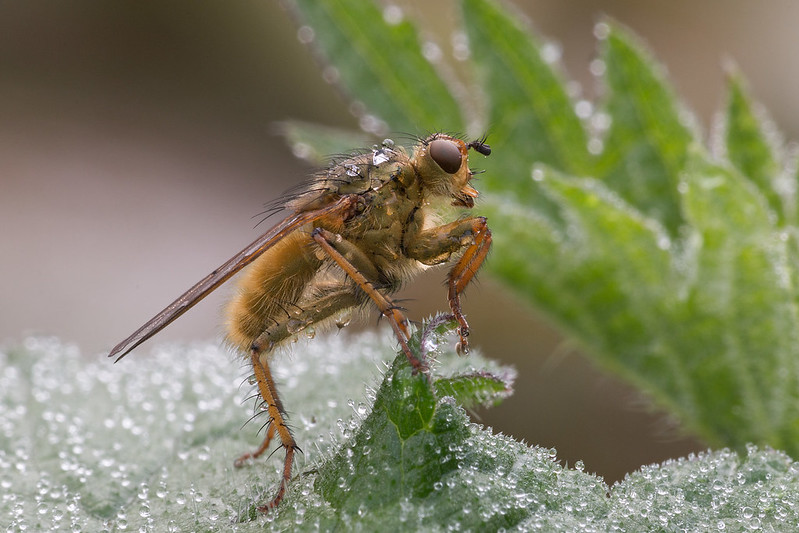
0552 010 Yellow Dung Fly (Scathophaga stercoraria) (male) 2014_04_09 IMG_3423-Edit-3 PS1 PSS3 by gardenersassistant, on Flickr
ISO 100, f/32, 1/3 sec, natural light
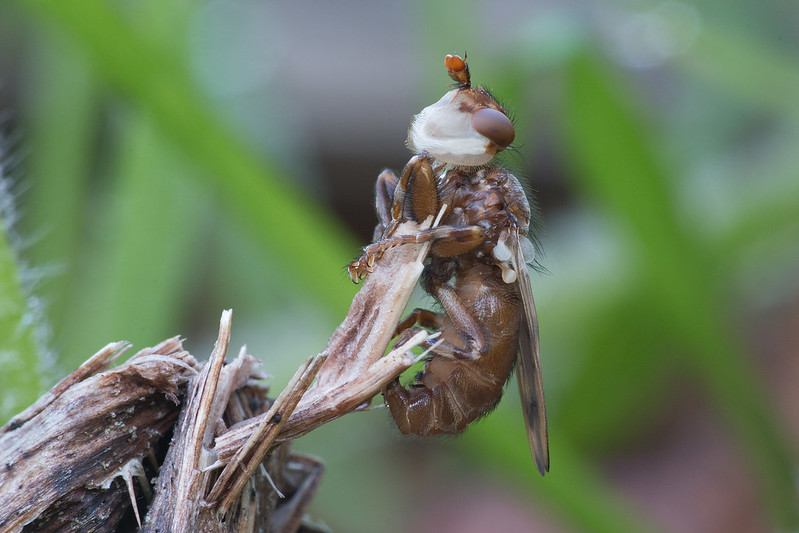
0552 046 Myopa 2014_04_09 IMG_3579-Edit-2 PS1 PSS3 by gardenersassistant, on Flickr
There again, perhaps this FZ200 image is rather similar (captured later in the morning and in very different light - sunny, stronger light, allowing a fast shutter speed, but relatively harsh compared to the soft, diffuse early morning light that day).
ISO 100, f/5.6, 1/500 sec, natural light (f/5.6 on the FZ200 is equivalent to about f/16 on the 70D in terms of dof)

0552 098 Yellow Dung Fly (Scathophaga stercoraria) (male) 2014_04_09 P1250544-Edit PS1 PSS3.63 by gardenersassistant, on Flickr
So, things are still unresolved, but I decided that what Pete and Tim suggested about sticking with one set of kit for a while made sense, so today I went out for my first photo session for a while and worked exclusively with the 70D. It was at one of the local nature reserves, and I took the FZ200 with me, but didn't feel the need to use it. I used natural light except for one attempt early on in the session using flash with the 70D, but it produced the "photographed with flash" look that I dislike so much, and I put the flash away and for the rest of the session I tried patience, waiting and trying to catch moments of still air. I'll process today's session next I think, as I'm very curious as to how the images will turn out. I certainly seem to be getting more comfortable using the 70D, at least in natural light, and down to around the 1:1 magnification I get with the Raynox 150, which is what I was using almost all the time today.
I am going to try smaller subjects and therefore higher magnifications again with the 70D now I'm getting more comfortable with it, and that will involve trying flash again too.
I turned away from things photographic and did other things for a few days to get some distance from my confusions, disappointments and annoyances. And then I eased my self back into it by working on the images from a session at one of the local nature reserves. I chose to work on that particular session because I wanted to pursue the issue of which camera to use, and I had used both the 70D and the FZ200 during that session. There had been a lot of Dung flies that day, one of my favourite subjects, and I had used both cameras to take pictures of them. So I thought there might be useful comparisons that could shed some light on the "Which camera" issue; comparisons between images captured that day with the two cameras, and comparisons between images captured with the 70D and images of Dung flies I have captured with other cameras in the past few years.
The selection and processing turned out to be quite a big job, especially for someone whose enthusiasm was still a bit provisional. It had been a six hour session and I had a little over 1,000 images to work through, and it didn't help that the images I first worked on (from the 70D) turned out to have dust bunnies (despite my careful sensor cleaning). I reprocessed to get rid of them, and then saw more. Several of them needed three of four attempts to get rid of them all (well, there may still be some for all I know - my patience only stretches so far). Fortunately, the rest of the 70D images either didn't have dust bunnies, or my brain had switched off my willingness to see them, and of course when I got on to the FZ200 images the dust bunny issue simply didn't arise (which of course made me think even more favourably of the FZ200 and less favourably of the 70D).
As it turned out the session did not provide any easy, direct, like-for-like comparisons (same or very similar subject, angle, light etc). I had started out using the 70D, in low, post-dawn natural (overcast I think) light and still-ish air, and then changed over to the FZ200 when I encountered some smaller subjects that needed flash. I then kept using the FZ200 even when the light levels came up, and in due course the sun came out. I think I was enjoying using the FZ200 so much that I didn't want the bother of using the 70D and then not having flash readily available. (I was switching a lot between using and not using flash). Had I been more methodical about it I could probably have captured some pretty much like-for-like comparison shots, but things were flowing nicely with the FZ200, and so I went with that flow instead.
I can't really draw any firm conclusions from this session as to image quality. I keep looking at these two images and wondering if they have a better combination of depth of field, clarity and detail than I have been able to achieve with any of my other cameras. It's possible, but I'm really not sure about it.
ISO 100, f/32, 1/2 sec, natural light

0552 010 Yellow Dung Fly (Scathophaga stercoraria) (male) 2014_04_09 IMG_3423-Edit-3 PS1 PSS3 by gardenersassistant, on Flickr
ISO 100, f/32, 1/3 sec, natural light

0552 046 Myopa 2014_04_09 IMG_3579-Edit-2 PS1 PSS3 by gardenersassistant, on Flickr
There again, perhaps this FZ200 image is rather similar (captured later in the morning and in very different light - sunny, stronger light, allowing a fast shutter speed, but relatively harsh compared to the soft, diffuse early morning light that day).
ISO 100, f/5.6, 1/500 sec, natural light (f/5.6 on the FZ200 is equivalent to about f/16 on the 70D in terms of dof)

0552 098 Yellow Dung Fly (Scathophaga stercoraria) (male) 2014_04_09 P1250544-Edit PS1 PSS3.63 by gardenersassistant, on Flickr
So, things are still unresolved, but I decided that what Pete and Tim suggested about sticking with one set of kit for a while made sense, so today I went out for my first photo session for a while and worked exclusively with the 70D. It was at one of the local nature reserves, and I took the FZ200 with me, but didn't feel the need to use it. I used natural light except for one attempt early on in the session using flash with the 70D, but it produced the "photographed with flash" look that I dislike so much, and I put the flash away and for the rest of the session I tried patience, waiting and trying to catch moments of still air. I'll process today's session next I think, as I'm very curious as to how the images will turn out. I certainly seem to be getting more comfortable using the 70D, at least in natural light, and down to around the 1:1 magnification I get with the Raynox 150, which is what I was using almost all the time today.
I am going to try smaller subjects and therefore higher magnifications again with the 70D now I'm getting more comfortable with it, and that will involve trying flash again too.
- Messages
- 8,826
- Name
- Bryn
- Edit My Images
- Yes
Welcome back.... 
Looking forward to the journey, ive hit that issue with my flash setups so for the moment solely going to use ring. But before a shoot I decide what kit I wanna use and stick to it even if it means missing a few shots. Ideally would have 2/3 camera's with different setups but that would be impractical.
Looking forward to the journey, ive hit that issue with my flash setups so for the moment solely going to use ring. But before a shoot I decide what kit I wanna use and stick to it even if it means missing a few shots. Ideally would have 2/3 camera's with different setups but that would be impractical.
GardenersHelper
In Memoriam
- Messages
- 6,344
- Name
- Nick
- Edit My Images
- Yes
Welcome back....
Thanks.
Looking forward to the journey,
Me too, once more, after a little break.
ive hit that issue with my flash setups
Is that the issue of switching between kit and wondering which option to choose/losing shots while you make the change?
so for the moment solely going to use ring. But before a shoot I decide what kit I wanna use and stick to it even if it means missing a few shots. Ideally would have 2/3 camera's with different setups but that would be impractical.
I'm taking two cameras (and two flash units) at the moment. Not ideal, but for how I'm working its manageable. Well, the carrying it around is manageable - the deciding what to use and wasting time/opportunities while I do that is more of an issue, which is partly why I stuck with one camera with one medium power achromat and no flash most of the time yesterday. I did see some smaller subjects, but I decided to pass on them. I didn't see any larger subjects (butterflies, moths, dragonflies, damselflies etc). I did see and photograph one crane fly, but it was a rather small specimen and I didn't need to change to a less powerful achromat for that. The only thing I recall changing to a stronger achromat for was a dew-covered hopper which was nicely positioned with a nearby large dew drop.
Mind you, as to carrying around the kit being manageable, with two bags, the tripod and, as the morning progresses, coat and fleece that I take off as the temperature goes up, I do tend to make a "base camp" and leave a bag (with the camera and flash I'm not using at the moment) and the coat etc there, and then wander slowly around with the camera, tripod and the other bag (with achromats, batteries, scissors, spanner, lens cleaning stuff and various other bits and pieces). I move around so slowly that I tend to be no more than 10-15 metres from the base camp for an hour or two.
- Messages
- 8,826
- Name
- Bryn
- Edit My Images
- Yes
Is that the issue of switching between kit and wondering which option to choose/losing shots while you make the change?
Yep exactly that.... so I have decided not to switch kit for the time being, basically have an idea what sort of size creatures I'm looking for or scout out first then use the kit for that if something else comes up then nevermind. Can be a complete pain trying to remove tubes/flash etc whilst keeping everything clean and also the the fact whilst changing the bug has gone.
For bee size just use Tamron, half bee size 1x tubes, for springtails 2x tubes or raynox. Flash is almost always the ring, but have been practicing with bugs in the house with speedlights.
I have given myself too many options and its a little bit overwhelming and I'm sure I will miss lots of shots but sure that would be the case even if I had 4/5 cameras with different lens and flash combos.
GardenersHelper
In Memoriam
- Messages
- 6,344
- Name
- Nick
- Edit My Images
- Yes
Yep exactly that.... so I have decided not to switch kit for the time being, basically have an idea what sort of size creatures I'm looking for or scout out first then use the kit for that if something else comes up then nevermind.
That makes sense, but it's so tempting when you see something nice of a different size to change over (if you've got the kit with you of course).
Can be a complete pain trying to remove tubes/flash etc whilst keeping everything clean and also the the fact whilst changing the bug has gone.
Absolutely. And I'll give an extra vote for "whilst keeping everything clean". I'm leaving the 55-250 on the whole time, (having cleaned the sensor) and I'm still getting dust bunnies. I really wouldn't want to expose the sensor out in the field. I know lots of people say they've never had a problem with changing lenses, tubes etc out in the field, but especially with me using such small apertures I'm glad that's something I don't have to do.
For bee size just use Tamron, half bee size 1x tubes, for springtails 2x tubes or raynox. Flash is almost always the ring, but have been practicing with bugs in the house with speedlights.
Is that the single Nissin 866 mkii + pixo softbox as in the Show us your macro rig thread, or are you using more than one speedlight now? (Before getting rained off this afternoon I was doing some more experiments with flash and I'm thinking of having another go with dual flash with the 70D.)
I have given myself too many options and its a little bit overwhelming and I'm sure I will miss lots of shots but sure that would be the case even if I had 4/5 cameras with different lens and flash combos.
Overwhelming options. Yes, I know about that!
- Messages
- 8,826
- Name
- Bryn
- Edit My Images
- Yes
It was with the nissin yes, but I have got another speedlight (yongnuo mk3) plus a couple of polaroid softboxes 1 square like pixco and one octo. But im leaving the 2 flash setup when im better practiced with one. I have brackets with flash ball heads on and also a dual bendy arm one to try all cheapy ebay specials.
Though im currently liking results from the ring only suffer a little on really relective bugs.
Though im currently liking results from the ring only suffer a little on really relective bugs.
- Messages
- 4,779
- Name
- Tim
- Edit My Images
- Yes
Great to have you back Nick, you've been missed. Hope you get some of your mojo back.
I thought that Myopa was infected with something! What a funny looking fly... Love the light and colour of that first dungfly.
To be honest, I get annoyed when I have to switch from 1-3X to 5X+ and all I have to do is twist my lens and adjust my flash bracket! If I could find a way to not have to adjust my flash I would be much happier, but I'd probably have to buy a twin flash, and even then it would need adjusting when moving to the highest magnification. What I tend to do is decide on an approximate magnification and stick with that for a while, but sod's law, I usually at the wrong settings when I encounter something interesting.
I thought that Myopa was infected with something! What a funny looking fly... Love the light and colour of that first dungfly.
To be honest, I get annoyed when I have to switch from 1-3X to 5X+ and all I have to do is twist my lens and adjust my flash bracket! If I could find a way to not have to adjust my flash I would be much happier, but I'd probably have to buy a twin flash, and even then it would need adjusting when moving to the highest magnification. What I tend to do is decide on an approximate magnification and stick with that for a while, but sod's law, I usually at the wrong settings when I encounter something interesting.
- Messages
- 9,180
- Edit My Images
- Yes
nice to see you back Nick
I know how you feel about wanting a change I spent a lot of time last summer photographing puffins!
Going to the butterfly house at the zoo got me back into macro I really enjoyed it
Glad you are persevering with the 70D
About dust bunnies I don't notice anything on my 7D maybe because im normally at wide apertures but I still should check my sensor I haven't done a clean for about a year
Hope you start to find dragonflies and damselflies you should start seeing them soon
I know how you feel about wanting a change I spent a lot of time last summer photographing puffins!
Going to the butterfly house at the zoo got me back into macro I really enjoyed it
Glad you are persevering with the 70D
About dust bunnies I don't notice anything on my 7D maybe because im normally at wide apertures but I still should check my sensor I haven't done a clean for about a year
Hope you start to find dragonflies and damselflies you should start seeing them soon
Last edited:
GardenersHelper
In Memoriam
- Messages
- 6,344
- Name
- Nick
- Edit My Images
- Yes
Great to have you back Nick, you've been missed. Hope you get some of your mojo back.
I thought that Myopa was infected with something! What a funny looking fly... Love the light and colour of that first dungfly.
To be honest, I get annoyed when I have to switch from 1-3X to 5X+ and all I have to do is twist my lens and adjust my flash bracket! If I could find a way to not have to adjust my flash I would be much happier, but I'd probably have to buy a twin flash, and even then it would need adjusting when moving to the highest magnification. What I tend to do is decide on an approximate magnification and stick with that for a while, but sod's law, I usually at the wrong settings when I encounter something interesting.
Thanks Tim. I think my interest and enthusiasm are back now to a large extent. However, I'm channelling my efforts more into my own journey for a while. I think one of the issues was that I had got drawn into spending so much time writing stuff on the forum that it was draining me. I'm enjoying what everyone is doing, but there is a lot of activity on the forum, which is great to see, but difficult to keep up with in terms of responding, so I'm using the "Like" button as my main contribution for now rather than writing what can be quite time-consuming responses, especially if you do a lot of them, and/or you get into detailed CC rather than "nice shot" type comments. There is something similar going on with (not) posting my images. I have some (plenty now I suppose) that I could post, but I'm wary of posting stuff knowing that some people are likely to comment, but when I'm not really engaged with reciprocal commenting on other folk's work. So I'm restricting it for now at least to an occasional post in this thread where it illustrates something about my journey.
The Myopa is a very strange looking beast isn't it!
I found twisting the lens hard on the MPE-65 - you have to turn it so much, and it needed much more force than I've ever had to apply on a focus ring before. Quite apart from the physical effort, I found it not good at all when trying to simultaneously adjust the camera position so as to keep the subject in the frame and not lose it while altering the magnification, which as you know is something I do rather often. As to adjusting the flash, one of the nice things about the fixed position rigs I use (FZ200 and G3) is that changing the magnification doesn't involve adjusting the flash. (Changing achromats can involve adjusting the flash, depending on what the change is between, but that is much less frequent for me than adjusting the magnification.)
I suppose my version of working with an approximate magnification is to leave a particular achromat on the camera for some time and just work with what I find that it can handle. But I find it difficult to pass opportunities by when they don't fit with the rigged setup. It's similar with taking the flash on and off the camera; when using natural light I really don't like having the flash in the way, so I tend to take it off. But then it isn't there if I suddenly need it. Sod's Law again.
Lots of tradeoffs, and opportunity costs, for all of us (within our photography and of course as between photography and the rest of our lives). And no single "best" photographic approach/setup. Unless of course we stick with a particular range of subjects that fit the kit. I don't like doing that though.
GardenersHelper
In Memoriam
- Messages
- 6,344
- Name
- Nick
- Edit My Images
- Yes
nice to see you back Nick
I know how you feel about wanting a change I spent a lot of time last summer photographing puffins!
Going to the butterfly house at the zoo got me back into macro I really enjoyed it
Glad you are persevering with the 70D
About dust bunnies I don't notice anything on my 7D maybe because im normally at wide apertures but I still should check my sensor I haven't done a clean for about a year
Hope you start to find dragonflies and damselflies you should start seeing them soon
Thanks Pete.
My change was out of photography completely. Not sure I should admit this, but I spent loads of time (re)playing a favourite space sim.
I'm trying to give the 70D a fair crack of the whip. It's still an open question though about kit. It seems to me that I have been thinking either/or about the 70D and the FZ200, and not really giving the G3 due consideration. More on that later I suspect.
Dust bunnies! Exasperating. I think there must be some remaining dust inside the camera, sometimes settling on the sensor, sometimes getting cleaned off by the startup/closedown cleaning, and then drifting back again, on and on. Grrrr. I'll need to look more closely at any new G3 images - perhaps that has them too but I just haven't noticed because I haven't been looking for them.
I don't tend to see many dragonflies, and the ones I do see are usually in non-capturable (for me) flight or where I can't get at them (quickly enough) to photograph them. I do see and can photograph more damselflies, although not huge numbers. Haven't seen any this year yet though.
- Messages
- 9,180
- Edit My Images
- Yes
Thanks Pete.
My change was out of photography completely. Not sure I should admit this, but I spent loads of time (re)playing a favourite space sim.
I'mive the 70D a fair crack of the whip. It's still an open question though about kit. It seems to me that I have been thinking either/or about the 70D and the FZ200, and not really giving the G3 due consideration. More on that later I suspect.
Dust bunnies! Exasperating. I think there must be some remaining dust inside the camera, sometimes settling on the sensor, sometimes getting cleaned off by the startup/closedown cleaning, and then drifting back again, on and on. Grrrr. I'll need to look more closely at any new G3 images - perhaps that has them too but I just haven't noticed because I haven't been looking for them.
I don't tend to see many dragonflies, and the ones I do see are usually in non-capturable (for me) flight or where I can't get at them (quickly enough) to photograph them. I do see and can photograph more damselflies, although not huge numbers. Haven't seen any this year yet though.
What game was it mass effect by any chance?
Im into games as well but dont get the time to play as much as i would like especially now the insects are out
My favourite is Halo and various rpg, s
Its definately worth spending time looking for damselflies some of the female blue damselflies are stunning with orange pink and purple colour forms
I will post some up
I do struggle sometimes to find dragonflies I have only once photographed common and brown hawkers
Last edited:
GardenersHelper
In Memoriam
- Messages
- 6,344
- Name
- Nick
- Edit My Images
- Yes
What game was it mass effect by any chance?
Im into games as well but dont get the time to play as much as i would like especially now the insects are out
My favourite is Halo and various rpg, s
I've played one or two versions of Mass Effect, although not the latest one I think. It was X3 - Albion Prelude that I played last week. I'm well into RPGs, as long as I can play them third person; not much into first person games. I've played all the (single player) Elder Scrolls games, more than once, and various others. I usually play as a mage - I like throwing thunderbolts and summoning creatures to fight for me.
Its definately worth spending time looking
I don't really go out looking for particular subjects, partly because I don't really know/haven't worked out/learnt/can't remember where and when to look for this or that subject. Everything is a bit of an unstructured haze for me. I just go out, wander around and see what turns up. It can be very variable. I was out this afternoon at a site where just two days ago there were loads of Dung flies, as there had been a day or two earlier. But today, hardly any. Weather-related perhaps. I don't know.
- Messages
- 9,180
- Edit My Images
- Yes
Forgot to say love the new shots the first yellow dung fly especially is wonderful the dew makes the shot
It can be tricky finding the insects sometimes there's no logic to where they are but often they are concentrated in small areas and its just a matter of exploring to get to know a site
I try to travel light it makes it much easier when you may have to walk a long way
When I went out last week for the first time I brought too much gear and had to force myself to walk across the moss to another area as my bag was too heavy
Im now going to go back to carrying just one camera and lens the 7D and 100L
I've bought a photo vest and am hoping to be able to carry all my small bits and bobs in that and manage without a bag
For flash I'll use the pop up flash with a diffuser
I'm into the elder scroll games too my favourite is oblivion have played that twice
It can be tricky finding the insects sometimes there's no logic to where they are but often they are concentrated in small areas and its just a matter of exploring to get to know a site
I try to travel light it makes it much easier when you may have to walk a long way
When I went out last week for the first time I brought too much gear and had to force myself to walk across the moss to another area as my bag was too heavy
Im now going to go back to carrying just one camera and lens the 7D and 100L
I've bought a photo vest and am hoping to be able to carry all my small bits and bobs in that and manage without a bag
For flash I'll use the pop up flash with a diffuser
I'm into the elder scroll games too my favourite is oblivion have played that twice
Last edited:
GardenersHelper
In Memoriam
- Messages
- 6,344
- Name
- Nick
- Edit My Images
- Yes
The yellow dung fly with the dew is awesome, Nick.
Thanks Damian.
Hope you get your head around everything - sometimes we need to step back before stepping forward.
I'm sure you are right about that. I've been stepping back, reflecting, and then trying to move forward on just one thing at a time so it's not so confusing. On that front, a couple of days ago I went out into the garden to simply try flash again on the 70D, nothing else.
By keeping it simple I was able to be a bit more methodical than usual, and although I couldn't try many examples because I kept getting rained off I did manage to convince myself that I do have real problems with flash on the 70D for my type of photos. I think it basically comes down to the fact that I want to use very small apertures to get as much dof as I can. And that makes it difficult to throw enough light at the subject, even if I increase the ISO to 800 for some darker scenes.
Because I use achromats this problem is worse with the 70D than with my G3 and FZ200. That is because the lens extends on the 70D but not on the other two cameras. That means that with the 70D the flash gets further from the subject as the magnification increases, and the light from the flash drops off quickly as the distance increases. This is with my current arrangement of the flash being attached to the camera hot shoe. One option I might look at is a different flash arrangement which lets me move/keep the flash close to the subject. Perhaps a ring flash, or perhaps a bracket of some sort, although I've thought about brackets before and not been able to work out how to get one that would combine acceptably with my use of tripod, focus rail and ball-head, and the fact that ideally I would like to be able to work in portrait orientation as well as landscape, which some bracket arrangements might not be sufficiently robust for. (The bracket arrangement I tried so I could use two flashes with the 70D needed to be kept horizontal to stop the brackets rotating.)
It's frustrating, because I did get a couple of captures of a rather small spider (here is one of them) that I thought were ok (well, ok-ish - I don't like dark backgrounds in this sort of image, which is one of the reasons I don't really like using flash as the main light source). But nothing else I tried produced anything of usable quality (with or without dark backgrounds).
ISO 400, f/25, 1/250 sec
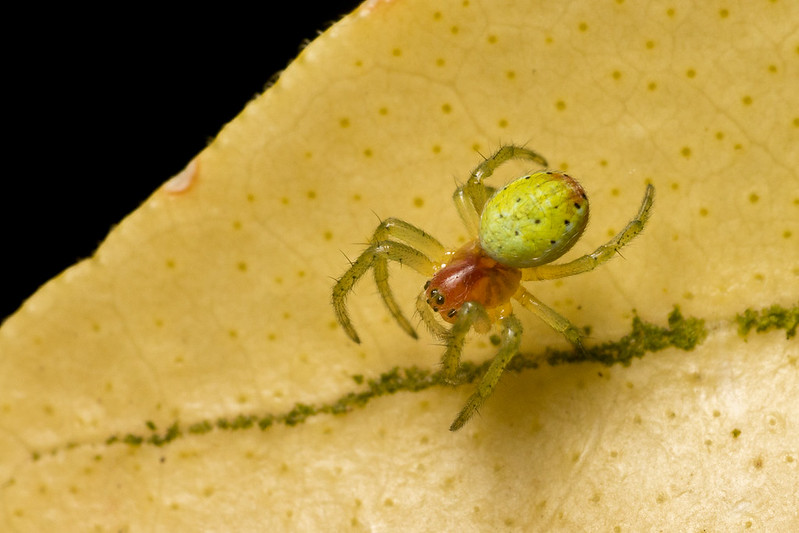
0553 1 2014_05_01 IMG_7860-Edit-3 PS1 PSS3 by gardenersassistant, on Flickr
And it is even more frustrating that when it works well the 70D produces images that I can crop more than with my other cameras and still retain enough image quality for my purposes and taste. For example here is the crop I used for the little spider image.
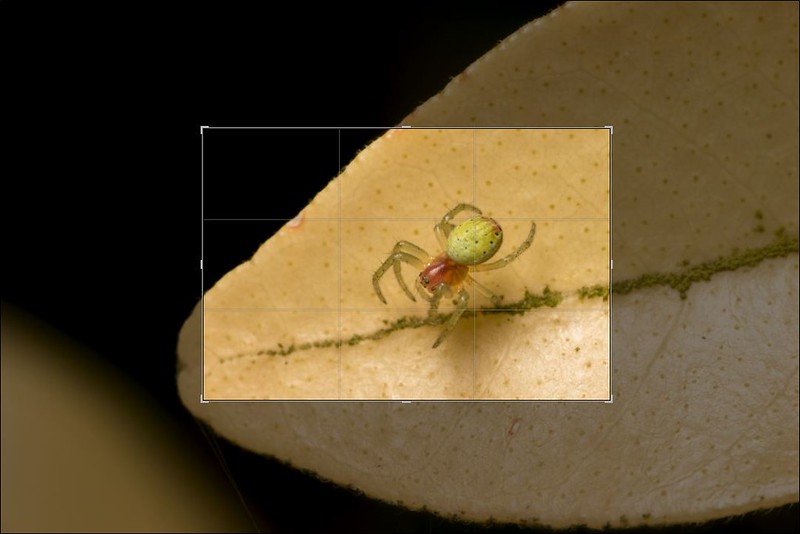
Crop for spider image by gardenersassistant, on Flickr
Yesterday, again trying to concentrate methodically on a single issue, I went out to one of the local nature reserves with the 70D and the G3 to test whether using flash was any better with the G3. I set them both up with a Raynox 150 (I have two 150s), and had a flash (Metz 58-AF2) attached to each of them, so I could switch between them by simply putting one down and picking up the other, and swapping the diffuser between them, which is really quick. I switched back and forth between them, including trying the same subject with both of them when subjects stayed in place long enough to let me.
I haven't worked on the images yet, but the capturing gave me similar problems with both of them - sometimes I could get adequate light levels, sometimes not. (And sometimes I got dark backgrounds, and sometimes not, although of course this is an issue with using flash rather than to do with any particular camera.) As it stands, with the current flash arrangements, neither the 70D nor the G3 seems satisfactory (even if some of the images come out ok-ish, like the little spider here, and even if some come out really well, because the variability of the results is more than I want to put up with.)
My next move on the flash front is to do a methodical comparison between the 70D and the FZ200 using flash. I want to check out my impression that the FZ200 gives more consistent results. If that is true, then even if it can't produce the quality that the 70D can (sometimes) I think it would be a better bet for flash work. If it does turn out to be no better, then I'll have to think about alternative flash arrangements, or change my attitude about failure rates.
In the short sessions between showers when I captured the little spider there weren't many suitable subjects around for testing the flash, so I spent a little time on some tulips. That reminded me how much I like photographing flowers, and how much at home I feel with the 70D for flowers. I spent very little time on them, but I did get a couple I quite like.
ISO 100, f/14, 1/160 sec

0553 3 2014_05_01 IMG_7792-Edit PS1 PSS3 by gardenersassistant, on Flickr
ISO 100, f/14, 1/80 sec
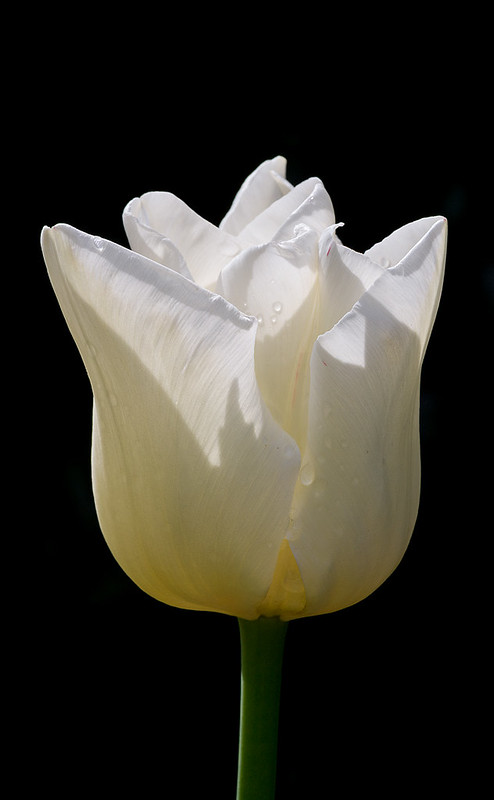
0553 5 2014_05_01 IMG_7799-Edit-2 PS1 PSS3 by gardenersassistant, on Flickr
I did think that today I would continue with the flash tests - 70D versus FZ200, but seeing how much I enjoyed the few minutes with the tulips I decided to concentrate on flowers today, so I spent several hours this afternoon photographing flowers in our garden, both in bright, middle of the day sunshine (which of course is generally reckoned to be a bad time to photograph flowers) and in the soft light of the late afternoon. I just used the 70D with the 500D attached, another simplification. I did take the 500D off, just once I think, but it wasn't for long.
I had a lovely time, working slowly and carefully - very relaxing. And I added a new technique to my kitbag, which I'm rather pleased about and may be using quite a lot - more on that in due course.
Last edited:
GardenersHelper
In Memoriam
- Messages
- 6,344
- Name
- Nick
- Edit My Images
- Yes
Forgot to say love the new shots the first yellow dung fly especially is wonderful the dew makes the shot
Thanks Pete.
It can be tricky finding the insects sometimes there's no logic to where they are but often they are concentrated in small areas and its just a matter of exploring to get to know a site
Makes me think I should range wider on the reserves I think. I've probably been operating in much too restricted an area at each of them.
I try to travel light it makes it much easier when you may have to walk a long way
When I went out last week for the first time I brought too much gear and had to force myself to walk across the moss to another area as my bag was too heavy
Im now going to go back to carrying just one camera and lens the 7D and 100L
I've bought a photo vest and am hoping to be able to carry all my small bits and bobs in that and manage without a bag
For flash I'll use the pop up flash with a diffuser
Interesting. You'll see in my reply to Damian that I'm trying to simplify at the moment and concentrate on one thing at a time with a limited set of kit.
I'm into the elder scroll games too my favourite is oblivion have played that twice
Oblivion. Twice. Me too. (Although I rather spoiled it the second time because I gained invisibility and flying too soon and, coupled with summoning, that made everything much too easy.)
- Messages
- 4,779
- Name
- Tim
- Edit My Images
- Yes
I always assumed the lens itself was blocking light from the flash when I have it hot-shoe mounted and using high magnifications (although obviously there is less light getting to the sensor at high mags).
I love the results you are getting though, the technique you employ gets some really stunning results as demonstrated by the level of sharpness and detail on that spider. I had no idea it was a crop until scrolling down and was surprised at how much you were able to crop it. Very impressive!
I love the results you are getting though, the technique you employ gets some really stunning results as demonstrated by the level of sharpness and detail on that spider. I had no idea it was a crop until scrolling down and was surprised at how much you were able to crop it. Very impressive!
Last edited:
GardenersHelper
In Memoriam
- Messages
- 6,344
- Name
- Nick
- Edit My Images
- Yes
I always assumed the lens itself was blocking light from the flash when I have it hot-shoe mounted and using high magnifications (although obviously there is less light getting to the sensor at high mags).
Ah, I hadn't checked that.... but I have now. I don't think that's it. I just checked at several magnifications from min to max with both the Raynox 250 and Raynox MSN-202. On a quick look, on the LCD, the subject seemed to be illuminated ok (bright, and evenly illuminated) for all the test shots.
Here is what the rig and working distance look like at maximum magnification with the Raynox 250,
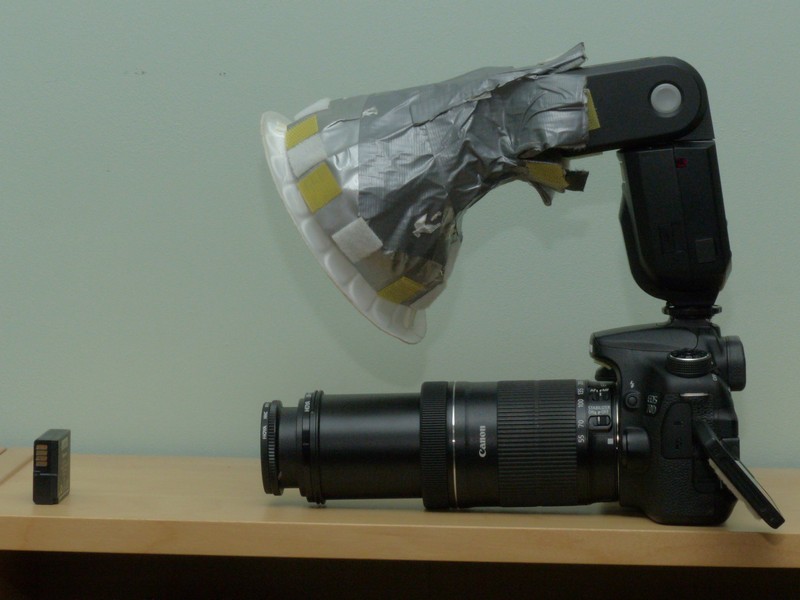
Raynox 250 on 70D by gardenersassistant, on Flickr
and here with the MSN-202

Raynox MSN-202 on 70D by gardenersassistant, on Flickr
The weird thing is that as far as I could see there was no drop-off as the magnification increased, and that was with ISO 100 and f/22, rather than the higher ISOs I've been having to use out in the field. But at one point yesterday I'm sure I remember seeing a drop off as magnification increased (not a trivial drop off - a big, brutal, you couldn't miss it, from ok to really dark type drop off). I'll need to check yesterday's images to make sure I haven't imagined it, but this sort of inconsistency is what has been getting to me. If I could pin it down so I was clear about exactly what the problem is then I could live with it/do something about it. As it is, there is still a significant mystery factor in this.
I love the results you are getting though, the technique you employ gets some really stunning results as demonstrated by the level of sharpness and detail on that spider. I had no idea it was a crop until scrolling down and was surprised at how much you were able to crop it. Very impressive!
Thanks. I was surprised by that spider. I had spent some time capturing images of another one of a similar size, being very careful about it, and none of them were usable - not enough dof. I found three that I could stack, but that didn't produce a workable result either. Then with the one in the post above, I got to take three shots, in a hurry, and it was gone. And I get a nice result out of it. More bafflement.
- Messages
- 4,779
- Name
- Tim
- Edit My Images
- Yes
If you draw a line from the centre of the diffuser to the subject, at the same angle as the diffuser, in the first image the line falls directly on the subject. If you do the same for the second image, the line will fall somewhere behind the subject. So rather than the lens doing any kind of blocking, could the majority of light be falling behind the subject at higher magnifications? It might explain whey you experienced a sudden drop off of light at a higher magnification, there is possible a critical point (or angle) where the light moves from hitting the subject, to falling behind it. I could be barking up the wrong tree again here (obviously the diffuser is helping to spread that light, so some will always be hitting the subject), but I suppose it is a possible theory. This may not have been apparent with the above test if you were in an enclosed space (the light could be bouncing all over the place) but more apparent in the field where more would be lost.
The flash bracket I use (along with a ball-head) enables me to keep the diffuser in the same position (at the edge of the lens) and re-angle it as I need to change magnifications. May be worth revisiting the flash brackets.
The flash bracket I use (along with a ball-head) enables me to keep the diffuser in the same position (at the edge of the lens) and re-angle it as I need to change magnifications. May be worth revisiting the flash brackets.
- Messages
- 9,180
- Edit My Images
- Yes
Just a quick point I think Tim has hit on something I now remember tbat when my friend uses the MPE 65 high mag lens his 430 ex flash is on a bracket with two angled ball joints that allow him to adjust where the flash output lands
He uses a similar diffuser to you I think he tries to get the flash pointing at the end of the lens
He uses a similar diffuser to you I think he tries to get the flash pointing at the end of the lens
GardenersHelper
In Memoriam
- Messages
- 6,344
- Name
- Nick
- Edit My Images
- Yes
If you draw a line from the centre of the diffuser to the subject, at the same angle as the diffuser, in the first image the line falls directly on the subject. If you do the same for the second image, the line will fall somewhere behind the subject. So rather than the lens doing any kind of blocking, could the majority of light be falling behind the subject at higher magnifications? It might explain whey you experienced a sudden drop off of light at a higher magnification, there is possible a critical point (or angle) where the light moves from hitting the subject, to falling behind it. I could be barking up the wrong tree again here (obviously the diffuser is helping to spread that light, so some will always be hitting the subject), but I suppose it is a possible theory. This may not have been apparent with the above test if you were in an enclosed space (the light could be bouncing all over the place) but more apparent in the field where more would be lost.
The flash bracket I use (along with a ball-head) enables me to keep the diffuser in the same position (at the edge of the lens) and re-angle it as I need to change magnifications. May be worth revisiting the flash brackets.
Just a quick point I think Tim has hit on something I now remember tbat when my friend uses the MPE 65 high mag lens his 430 ex flash is on a bracket with two angled ball joints that allow him to adjust where the flash output lands
He uses a similar diffuser to you I think he tries to get the flash pointing at the end of the lens
Thanks both. You may have hit on something here. Because of the way the diffuser is attached to the flash unit (with Velcro), I can move it around a lot, and I have noticed that the lighting on the scene can vary considerably depending on the particular direction the diffuser is pointing. I had, I think, assumed (more or less unconsciously rather than as an explicit, thought-through proposition) that that effect was scene-related. But perhaps there is something systematic going on here. And I take the point about reflections Tim - the rig was right beside a light coloured wall for that test I did. I shall do some more methodical experiments out of doors.
As to direction the diffuser is pointing, I'm not clear about the geometry of it Tim. Look again at either example, and imagine the target and the achromat in the same position, but the camera at wide angle, for low magnification. The barrel is now not extended, the camera is nearer the subject, and so is the flash, and the directional line from the diffuser is now aimed further behind the subject, so it should be getting less light, not more. Perhaps. Anyway, it is methodical practical tests that will be most useful here I think, with the thought of "direction matters" firmly in mind. Thanks again both.
GardenersHelper
In Memoriam
- Messages
- 6,344
- Name
- Nick
- Edit My Images
- Yes
Because of the way the diffuser is attached to the flash unit (with Velcro), I can move it around a lot, and I have noticed that the lighting on the scene can vary considerably depending on the particular direction the diffuser is pointing. I had, I think, assumed (more or less unconsciously rather than as an explicit, thought-through proposition) that that effect was scene-related.
This is only part of the story I realised just after I had posted this. I do tend to change the angle of the diffuser when I switch between achromats, angled more steeply down as the power of the achromat increases. However, what I don't do is to adjust the diffuser for different magnifications. That would I think matter more for the 70D, which extends, than for the G3 and FZ200, which don't, which of course means that, since I'm using achromats, the distance between the camera and the subject, and hence the flash and the subject, remains constant irrespective of magnification for a particular achromat when using the G3 and FZ200, and so therefore does the angle at which the diffuser is pointing in relation to the subject.
There's something else odd that I've noticed sometimes too, which is that sometimes I get better (more) light on the subject if the flash unit/diffuser is angled away from the subject in the horizontal plane (i.e. looking at it from above, the flash/diffuser doesn't point straight at the subject). Again, I had assumed this was scene-specific, but here too I need to try to work out with experiments whether there is something systematic involved.
GardenersHelper
In Memoriam
- Messages
- 6,344
- Name
- Nick
- Edit My Images
- Yes
Well, there is good news and there is bad news.
The good news is that I think I've worked out what is going on with flash with the 70D and how to deal with it.
The bad news is that the dust problem got so bad that earlier today I started thinking about stopping using the 70D altogether.
I went out into our garden yesterday morning and my next door neighbour's garden yesterday afternoon to do some methodical tests with flash on the 70D. Yesterday evening I went through the day's captures and by bed time had processed 25 or so of them when I noticed that one had a dust bunny. And looking back I saw that a number of the others had one too. I would have to go back and do some reprocessing, and decided that in the morning I would have another go at cleaning the sensor.
This morning I cleaned the sensor using one of the sensor cleaning pads with several drops of the solution that comes with it. Before the cleaning I had one dust spot - the one I had seen on the images I had been working on. (The images are of a wall with stippled paint. At each stage of the process I focused on the wall then captured an image, moved the camera slightly, captured a second image, and moved the camera slightly again and captured a third image. I could then identify the dust spots by flicking between images. The dust spots were the ones that didn't move between captures. (More on that a bit later. )
)

01 Before Cleaning IMG_9089 Edit 1 Export Annotated by gardenersassistant, on Flickr
Afterwards I had six or more spots, over on the right hand side of the sensor (I clean the sensor left to right). Most were circles, but one was a thick line (shown with a double outline).
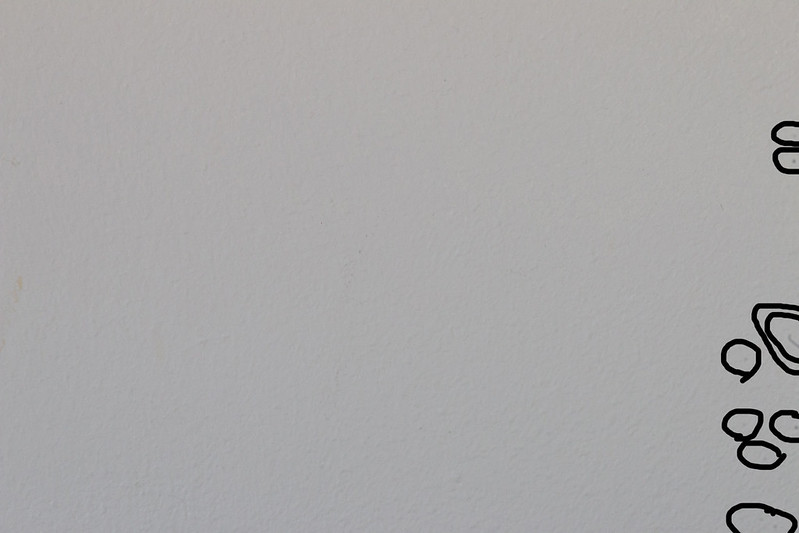
02 After first cleaning IMG_9092 Edit 1 Export Annotated by gardenersassistant, on Flickr
I peered into the camera with the mirror locked up and coming out of the folds on the underside of the mirror, saw what looked like some tiny, shiny shards of metal or possibly tiny lengths of hair or stiff fibre. I used my wife's best tweezers to see if I could remove them. It didn't seem possible. Perhaps I used the rocket at this stage. I don't recall. However, when I took another three images most of the dust spots had gone, but there was one of the lines at the top right,
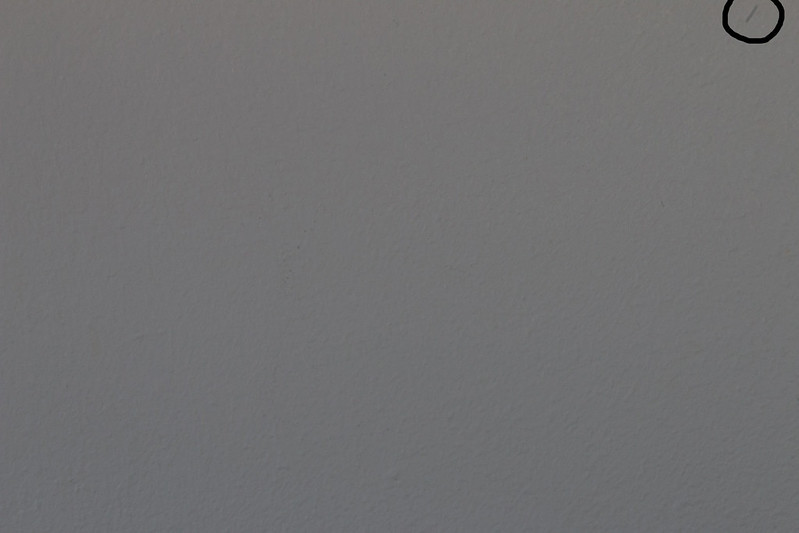
03 After using tweezers IMG_9096 Edit 1 Export Annotated by gardenersassistant, on Flickr
and this time it moved between captures.
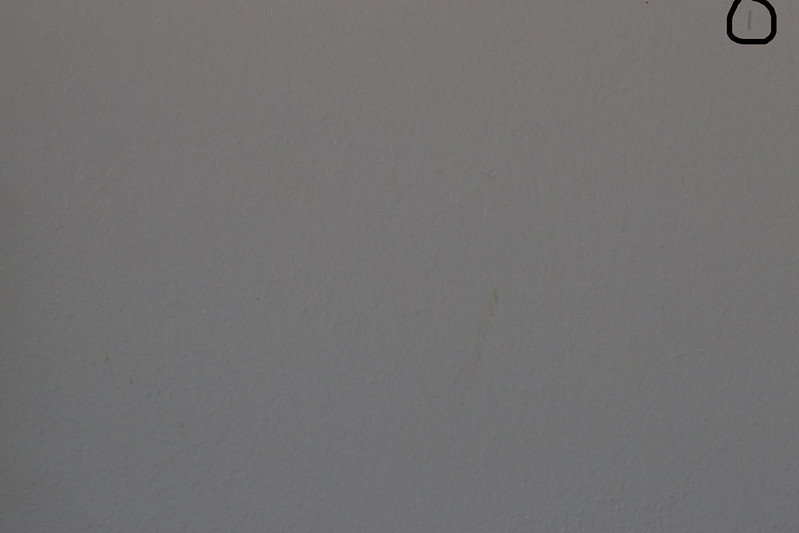
03 After using tweezers IMG_9097 Edit 1 Export Annotated by gardenersassistant, on Flickr
I used another pad to clean the sensor again, but now there were a couple of spots on the right.
After cleaning the sensor a third time I had a prominent spot towards the middle of the sensor.
After the fourth cleaning, the first image showed two long lines, one at the top and one on the left.
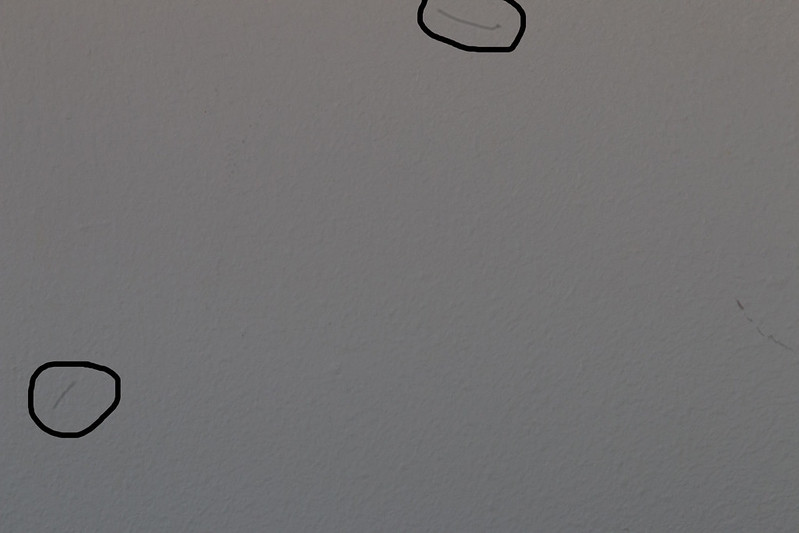
07 After 4th cleaning IMG_9107 Edit 1 Export Annotated by gardenersassistant, on Flickr
It was at this point that direct sunlight fell on the inside of the camera as I peered into it with the mirror locked up. I was shocked. Here is what I saw (well, actually, if you look at the larger version over at flickr it is a better view than I had looking at it directly).

07a Under the mirror P1260882 1100h by gardenersassistant, on Flickr
Where on earth had all that stuff come from? I have no idea. Since sending the 100L and MPE-65 back I've only changed lenses a handful of times, and not at all for ? several weeks.
I then tried something very ill-advised. Since I couldn't pick the detritus off with tweezers, I decided to try using another one of the pads, with several drops of the fluid of course. Oh dear. There is a coating of some sort on the underside of the mirror. It is presumably absorbant. It buckled. Not much, but I had the feeling that this could get very expensive. Thoughts of stopping using the 70D went through my mind, perhaps someone was trying to tell me a dSLR wasn't right for me, could I really be bothered with all this hassle, why not just use trouble-free, flexible, light, easy to use, convenient bridge cameras, or even a better MFT camera, I'd never had anything like this with my G3 although I changed lenses without thinking about it. Etc.
Anyway, the layer on the bottom of the mirror went back to being flat. And at the moment at least the camera seems to work ok. We'll see.
Then a fifth sensor cleaning, and lots of use of the Rocket blower. More of the lines, different from one capture to the next.
Vacuum cleaner, turned down low, with pointy nozzle, very gingerly. Still quite powerful suction though - pulled the mirror down a bit at one point. Two ordinary dust spots, one rather large and particularly dark.
Sixth sensor cleaning. It looks fine. Can't see any dust spots. Dismount camera, shake it around, remount it, take another three pictures of the wall. (Only) The middle one has the longest line yet,
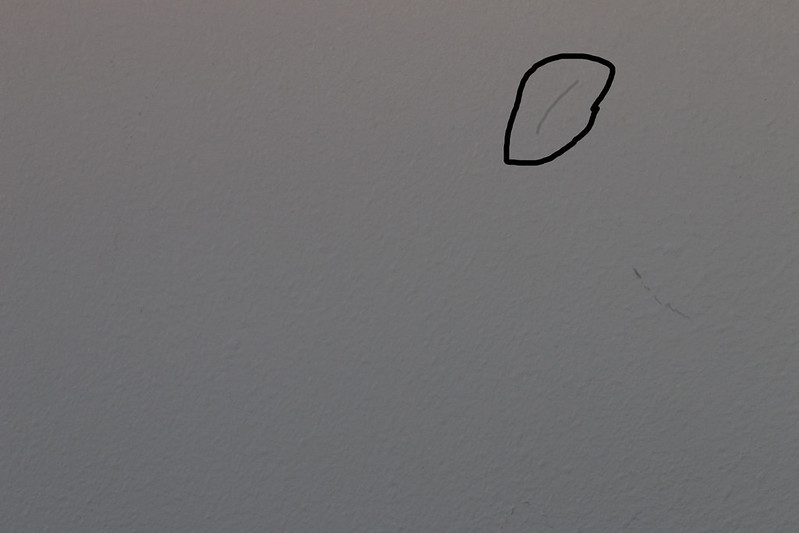
13 Dismount, shake camera, remount IMG_9130 Edit 1 Export Annotated by gardenersassistant, on Flickr
After the seventh cleaning there is a different line, in all three captures, along with more than half a dozen dust spots, some the same and some different as between the three captures. Dismount the camera, shake it about, remount, another three captures. The line and most of the spots are still there (one or two changing between captures).
(I used the vacuum cleaner again, less gingerly, at some point, but I've forgotten exactly when. I think it might have been here.)
After the eighth cleaning there is a spot towards the centre of the sensor. Dismount camera, shake it around, remount it, take another three pictures of the wall. The spot towards the middle has gone, There are two spots on the extreme right. Dismount, shake, remount, three more captures. Those two spots are still there.
I've only got four sensor cleaning pads left now. I order some more, And give up for now. Perhaps, having got most of the detritus out of the camera (it looks clean now at least, so I think it must be much better than it was), perhaps the remaining stuff won't impinge too much. Perhaps more of the vacuum cleaner. Perhaps professional cleaning, but I have to say I'm a bit jaundiced about that. How much more than I've done will they be doing? Suppose they clean it, get it to the point where it looks ok and return it, and then it all starts again because some of this grot is hiding away who knows where? Presumably they aren't going to take the camera apart to get at every nook and cranny.
I don't know how much more of this sort of thing I'm prepared to put up with, no matter if the 70D can produce better pictures. As well as making me feel negative about the 70D, It's putting me off interchangeable lens cameras in general. Or perhaps just dSLRs - I'm extremely puzzled as to why the G3 has never given a hint of this sort of problem. Surely in two years of using it I would have noticed if it did have anything like these issues. What is different this time round?
My fun factor is rather negative just now. I'll explain about the flash some other time.
The good news is that I think I've worked out what is going on with flash with the 70D and how to deal with it.
The bad news is that the dust problem got so bad that earlier today I started thinking about stopping using the 70D altogether.
I went out into our garden yesterday morning and my next door neighbour's garden yesterday afternoon to do some methodical tests with flash on the 70D. Yesterday evening I went through the day's captures and by bed time had processed 25 or so of them when I noticed that one had a dust bunny. And looking back I saw that a number of the others had one too. I would have to go back and do some reprocessing, and decided that in the morning I would have another go at cleaning the sensor.
This morning I cleaned the sensor using one of the sensor cleaning pads with several drops of the solution that comes with it. Before the cleaning I had one dust spot - the one I had seen on the images I had been working on. (The images are of a wall with stippled paint. At each stage of the process I focused on the wall then captured an image, moved the camera slightly, captured a second image, and moved the camera slightly again and captured a third image. I could then identify the dust spots by flicking between images. The dust spots were the ones that didn't move between captures. (More on that a bit later.

01 Before Cleaning IMG_9089 Edit 1 Export Annotated by gardenersassistant, on Flickr
Afterwards I had six or more spots, over on the right hand side of the sensor (I clean the sensor left to right). Most were circles, but one was a thick line (shown with a double outline).

02 After first cleaning IMG_9092 Edit 1 Export Annotated by gardenersassistant, on Flickr
I peered into the camera with the mirror locked up and coming out of the folds on the underside of the mirror, saw what looked like some tiny, shiny shards of metal or possibly tiny lengths of hair or stiff fibre. I used my wife's best tweezers to see if I could remove them. It didn't seem possible. Perhaps I used the rocket at this stage. I don't recall. However, when I took another three images most of the dust spots had gone, but there was one of the lines at the top right,

03 After using tweezers IMG_9096 Edit 1 Export Annotated by gardenersassistant, on Flickr
and this time it moved between captures.

03 After using tweezers IMG_9097 Edit 1 Export Annotated by gardenersassistant, on Flickr
I used another pad to clean the sensor again, but now there were a couple of spots on the right.
After cleaning the sensor a third time I had a prominent spot towards the middle of the sensor.
After the fourth cleaning, the first image showed two long lines, one at the top and one on the left.

07 After 4th cleaning IMG_9107 Edit 1 Export Annotated by gardenersassistant, on Flickr
It was at this point that direct sunlight fell on the inside of the camera as I peered into it with the mirror locked up. I was shocked. Here is what I saw (well, actually, if you look at the larger version over at flickr it is a better view than I had looking at it directly).

07a Under the mirror P1260882 1100h by gardenersassistant, on Flickr
Where on earth had all that stuff come from? I have no idea. Since sending the 100L and MPE-65 back I've only changed lenses a handful of times, and not at all for ? several weeks.
I then tried something very ill-advised. Since I couldn't pick the detritus off with tweezers, I decided to try using another one of the pads, with several drops of the fluid of course. Oh dear. There is a coating of some sort on the underside of the mirror. It is presumably absorbant. It buckled. Not much, but I had the feeling that this could get very expensive. Thoughts of stopping using the 70D went through my mind, perhaps someone was trying to tell me a dSLR wasn't right for me, could I really be bothered with all this hassle, why not just use trouble-free, flexible, light, easy to use, convenient bridge cameras, or even a better MFT camera, I'd never had anything like this with my G3 although I changed lenses without thinking about it. Etc.
Anyway, the layer on the bottom of the mirror went back to being flat. And at the moment at least the camera seems to work ok. We'll see.
Then a fifth sensor cleaning, and lots of use of the Rocket blower. More of the lines, different from one capture to the next.
Vacuum cleaner, turned down low, with pointy nozzle, very gingerly. Still quite powerful suction though - pulled the mirror down a bit at one point. Two ordinary dust spots, one rather large and particularly dark.
Sixth sensor cleaning. It looks fine. Can't see any dust spots. Dismount camera, shake it around, remount it, take another three pictures of the wall. (Only) The middle one has the longest line yet,

13 Dismount, shake camera, remount IMG_9130 Edit 1 Export Annotated by gardenersassistant, on Flickr
After the seventh cleaning there is a different line, in all three captures, along with more than half a dozen dust spots, some the same and some different as between the three captures. Dismount the camera, shake it about, remount, another three captures. The line and most of the spots are still there (one or two changing between captures).
(I used the vacuum cleaner again, less gingerly, at some point, but I've forgotten exactly when. I think it might have been here.)
After the eighth cleaning there is a spot towards the centre of the sensor. Dismount camera, shake it around, remount it, take another three pictures of the wall. The spot towards the middle has gone, There are two spots on the extreme right. Dismount, shake, remount, three more captures. Those two spots are still there.
I've only got four sensor cleaning pads left now. I order some more, And give up for now. Perhaps, having got most of the detritus out of the camera (it looks clean now at least, so I think it must be much better than it was), perhaps the remaining stuff won't impinge too much. Perhaps more of the vacuum cleaner. Perhaps professional cleaning, but I have to say I'm a bit jaundiced about that. How much more than I've done will they be doing? Suppose they clean it, get it to the point where it looks ok and return it, and then it all starts again because some of this grot is hiding away who knows where? Presumably they aren't going to take the camera apart to get at every nook and cranny.
I don't know how much more of this sort of thing I'm prepared to put up with, no matter if the 70D can produce better pictures. As well as making me feel negative about the 70D, It's putting me off interchangeable lens cameras in general. Or perhaps just dSLRs - I'm extremely puzzled as to why the G3 has never given a hint of this sort of problem. Surely in two years of using it I would have noticed if it did have anything like these issues. What is different this time round?
My fun factor is rather negative just now. I'll explain about the flash some other time.
Last edited:
GardenersHelper
In Memoriam
- Messages
- 6,344
- Name
- Nick
- Edit My Images
- Yes
Flash with the 70D.
Following on from discussions and suggestions in some recent posts in this thread, towards mid day yesterday I went out into the garden with the Raynox 150 and flash mounted on the 70D to see how the direction the flash bowl was pointing interacted with the magnification being used to impact the brightness of an image.
Changing the direction of the bowl does make a difference when changing between achromats - the stronger the achromat, the smaller the working distance, and the more steeply downwards the bowl needs to be directed. However, when zooming to change the magnification, no matter which achromat I used, changing the inclination of the bowl did not make any discernible difference. The effect of turning the bowl to a greater or lesser extent to one side or the other depended on the layout of the scene and what was nearest to the bowl.
The two factors that seemed to have the major influence on the brightness of an image were the brightness of the scene, and the magnification. This was not quite as obvious as it might at first appear, because sometimes I had been getting huge variations in the brightness of images of particular scenes, even of captures taken seconds apart. I had been using TTL metering and letting that decide what flash intensity to use. Before going out to do these experiments I had been looking at some of the 70D flash images from previous days and noticed that although some of them were extremely dark their histograms suggested that their exposures may have been set so as to avoid blown highlights. Coupled with a long tail at the top, this pushed most of the image towards/into the bottom half of the histogram, with the consequential dark and under-exposed look to the image.
In order to avoid this complication I put the flash into manual mode. That turned out to be the key to understanding what was going on and how to deal with it.
With the 70D in Av mode I have the shutter speed forced to 1/250 sec (max sync speed) when flash is in use. And I want to use small apertures for large depth of field (from f/22 at the wide end to f/32 at the tele end). Even though the Metz 58-AF2 that I use is powerful (as powerful as the Canon 580) even on sunny days like yesterday, and with the flash in manual mode at full power, it can't pump out enough light for 1/250 sec with f/22-f/32 at ISO 100. It could just about do it if there was a lot of white or light yellow in the scene, but as the colours got darker so did the image.
It suddenly became obvious that adjusting ISO was the way to control the exposure. I set the ISO to change in increments of 1/3 stop rather than complete stops. With the flash power fixed at maximum, the shutter speed fixed at 1/250 and the aperture fixed at f/32 (automatically reducing through f/29, f/25 to f/22 as I reduced the focal length/magnification, and automatically reverting it in the other direction), I had fine control of the exposure in 1/3 stop intervals by adjusting the ISO, which is very quick and easy to do on the 70D.
While testing this out I used Av mode some of the time and M mode some of the time. With the shutter speed and focal length fixed it amounts to the same thing. By and large I expect I will use Manual mode rather than Av because it is easier to change to a slower shutter speed, which I do sometimes want to do to raise the brightness of backgrounds,
Suddenly, I was getting results that I could understand in terms of image brightness. For each scene I had to start with a guess at a suitable ISO, but this rapidly became easier with a little practice. And it was very quick to make adjustments. Coupled with recently-gained knowledge about how much the 70D lets you raise shadows, I was able to get to reasonable exposures without much trouble for some quite tricky scenes, such as dark flies on white petals or light yellow leaves.
In that first session I used the Raynox 150 the whole time and worked with (what I regard as) medium-sized subjects. Here are some examples. The sharpness was rather hit and miss because I was working hand-held and using rocking focus rather than autofocus. Well, it would have been rocking focus if the subjects were still, but they were moving around a lot and what they were on moved in the breeze too, so it was more grab than rock. But as far as the exposures went, I found I could quickly get to a good exposure and once I was there there was none of the arbitrary, and sometimes huge, variation I had experience when using TTL metering.
After lunch I went into my next door neighbour's garden and tried the technique with some smaller subjects, using the Raynox 250, 150 and 250 stacked, and the MSN-202. The technique worked fine with all of them. With the subjects smaller, and the breeze getting stronger, gaining decent focus was obviously an issue. However, I had done a quick review of the morning session while eating lunch and realised that the hand-holding and rocking/grab technique was not working well, so I went back to using a tripod, but using it rather like a monopod, or a monopod with a forked pair of legs at the bottom end. I used autofocus most of the time, apart from the smallest subjects, for which I can't get autofocus to work. I will put several examples from the second session in my next post.
(The 1100 pixel hight "Original" size versions over at flickr don't have the halos I can see in, for example, the second and third of these.)
ISO 160, f/29, 1/250 sec
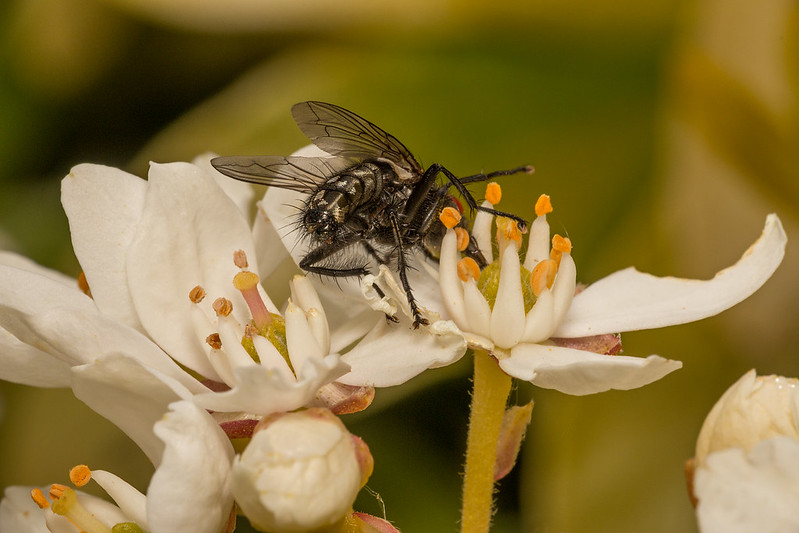
0554 03 2014_05_04 IMG_8636-Edit PS1 PSS3.86 by gardenersassistant, on Flickr
ISO 100, f/25, 1/250 sec

0554 06 2014_05_04 IMG_8740-Edit PS1 PSS3.86 by gardenersassistant, on Flickr
ISO 200, f/32, 1/250 sec
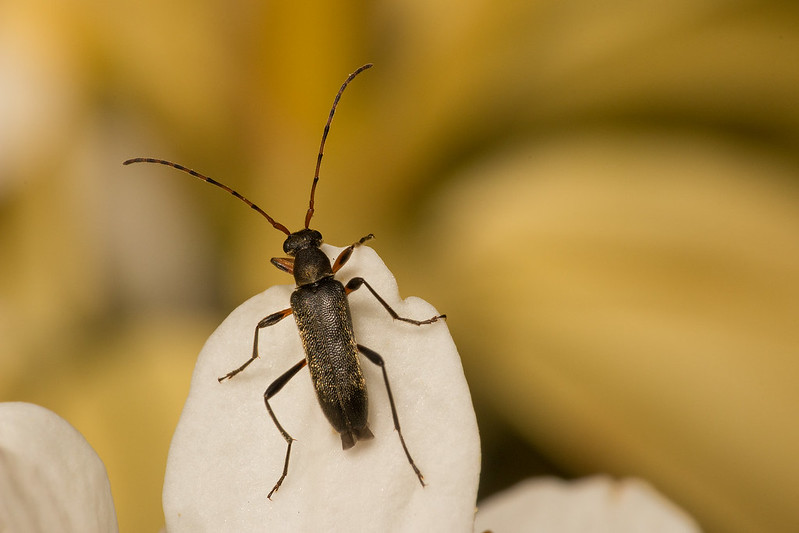
0554 07 2014_05_04 IMG_8732-Edit-2 PS1 PSS3.200 by gardenersassistant, on Flickr
ISO 200, f/29, 1/250 sec
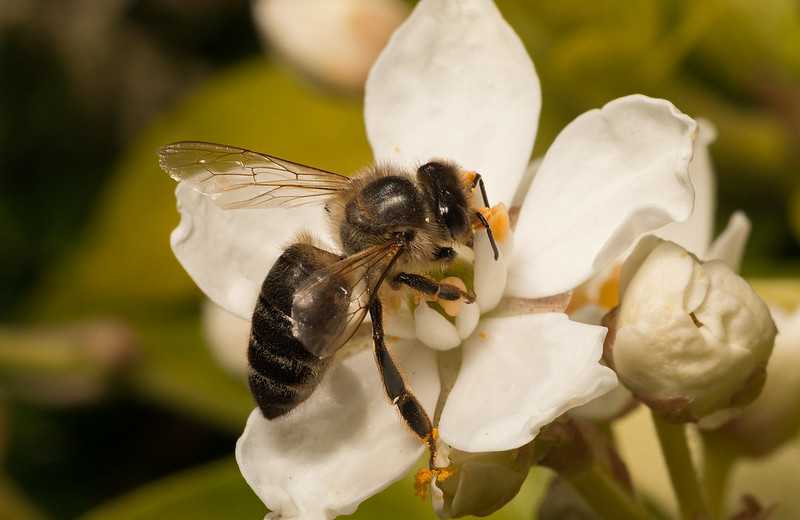
0554 09 2014_05_04 IMG_8781-Edit-2 PS1 PSS3.200 by gardenersassistant, on Flickr
ISO 160, f/29, 1/250 sec
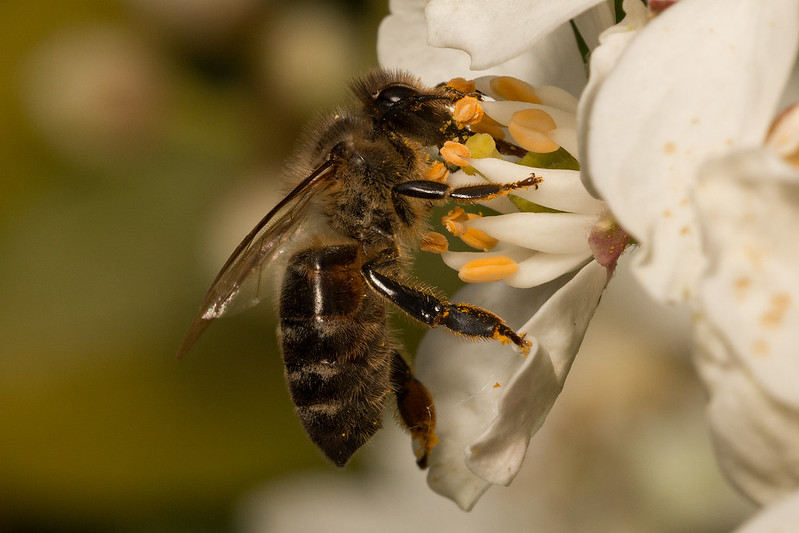
0554 10 2014_05_04 IMG_8771-Edit-2 PS1 PSS3.200 by gardenersassistant, on Flickr
Following on from discussions and suggestions in some recent posts in this thread, towards mid day yesterday I went out into the garden with the Raynox 150 and flash mounted on the 70D to see how the direction the flash bowl was pointing interacted with the magnification being used to impact the brightness of an image.
Changing the direction of the bowl does make a difference when changing between achromats - the stronger the achromat, the smaller the working distance, and the more steeply downwards the bowl needs to be directed. However, when zooming to change the magnification, no matter which achromat I used, changing the inclination of the bowl did not make any discernible difference. The effect of turning the bowl to a greater or lesser extent to one side or the other depended on the layout of the scene and what was nearest to the bowl.
The two factors that seemed to have the major influence on the brightness of an image were the brightness of the scene, and the magnification. This was not quite as obvious as it might at first appear, because sometimes I had been getting huge variations in the brightness of images of particular scenes, even of captures taken seconds apart. I had been using TTL metering and letting that decide what flash intensity to use. Before going out to do these experiments I had been looking at some of the 70D flash images from previous days and noticed that although some of them were extremely dark their histograms suggested that their exposures may have been set so as to avoid blown highlights. Coupled with a long tail at the top, this pushed most of the image towards/into the bottom half of the histogram, with the consequential dark and under-exposed look to the image.
In order to avoid this complication I put the flash into manual mode. That turned out to be the key to understanding what was going on and how to deal with it.
With the 70D in Av mode I have the shutter speed forced to 1/250 sec (max sync speed) when flash is in use. And I want to use small apertures for large depth of field (from f/22 at the wide end to f/32 at the tele end). Even though the Metz 58-AF2 that I use is powerful (as powerful as the Canon 580) even on sunny days like yesterday, and with the flash in manual mode at full power, it can't pump out enough light for 1/250 sec with f/22-f/32 at ISO 100. It could just about do it if there was a lot of white or light yellow in the scene, but as the colours got darker so did the image.
It suddenly became obvious that adjusting ISO was the way to control the exposure. I set the ISO to change in increments of 1/3 stop rather than complete stops. With the flash power fixed at maximum, the shutter speed fixed at 1/250 and the aperture fixed at f/32 (automatically reducing through f/29, f/25 to f/22 as I reduced the focal length/magnification, and automatically reverting it in the other direction), I had fine control of the exposure in 1/3 stop intervals by adjusting the ISO, which is very quick and easy to do on the 70D.
While testing this out I used Av mode some of the time and M mode some of the time. With the shutter speed and focal length fixed it amounts to the same thing. By and large I expect I will use Manual mode rather than Av because it is easier to change to a slower shutter speed, which I do sometimes want to do to raise the brightness of backgrounds,
Suddenly, I was getting results that I could understand in terms of image brightness. For each scene I had to start with a guess at a suitable ISO, but this rapidly became easier with a little practice. And it was very quick to make adjustments. Coupled with recently-gained knowledge about how much the 70D lets you raise shadows, I was able to get to reasonable exposures without much trouble for some quite tricky scenes, such as dark flies on white petals or light yellow leaves.
In that first session I used the Raynox 150 the whole time and worked with (what I regard as) medium-sized subjects. Here are some examples. The sharpness was rather hit and miss because I was working hand-held and using rocking focus rather than autofocus. Well, it would have been rocking focus if the subjects were still, but they were moving around a lot and what they were on moved in the breeze too, so it was more grab than rock. But as far as the exposures went, I found I could quickly get to a good exposure and once I was there there was none of the arbitrary, and sometimes huge, variation I had experience when using TTL metering.
After lunch I went into my next door neighbour's garden and tried the technique with some smaller subjects, using the Raynox 250, 150 and 250 stacked, and the MSN-202. The technique worked fine with all of them. With the subjects smaller, and the breeze getting stronger, gaining decent focus was obviously an issue. However, I had done a quick review of the morning session while eating lunch and realised that the hand-holding and rocking/grab technique was not working well, so I went back to using a tripod, but using it rather like a monopod, or a monopod with a forked pair of legs at the bottom end. I used autofocus most of the time, apart from the smallest subjects, for which I can't get autofocus to work. I will put several examples from the second session in my next post.
(The 1100 pixel hight "Original" size versions over at flickr don't have the halos I can see in, for example, the second and third of these.)
ISO 160, f/29, 1/250 sec

0554 03 2014_05_04 IMG_8636-Edit PS1 PSS3.86 by gardenersassistant, on Flickr
ISO 100, f/25, 1/250 sec

0554 06 2014_05_04 IMG_8740-Edit PS1 PSS3.86 by gardenersassistant, on Flickr
ISO 200, f/32, 1/250 sec

0554 07 2014_05_04 IMG_8732-Edit-2 PS1 PSS3.200 by gardenersassistant, on Flickr
ISO 200, f/29, 1/250 sec

0554 09 2014_05_04 IMG_8781-Edit-2 PS1 PSS3.200 by gardenersassistant, on Flickr
ISO 160, f/29, 1/250 sec

0554 10 2014_05_04 IMG_8771-Edit-2 PS1 PSS3.200 by gardenersassistant, on Flickr
GardenersHelper
In Memoriam
- Messages
- 6,344
- Name
- Nick
- Edit My Images
- Yes
Here are some examples from the experiments with smaller subjects, using the Raynox 250, 150 and 250 stacked, and MSN-202.
ISO 500, f/32, 1/250 sec
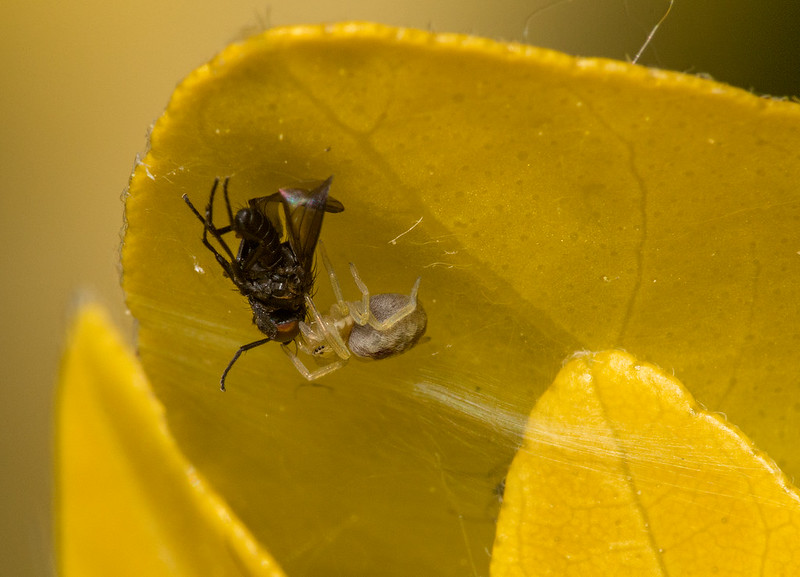
0554 13 2014_05_04 IMG_8785-Edit PS1 PSS3.200 by gardenersassistant, on Flickr
ISO 200, f/29. 1/250 sec
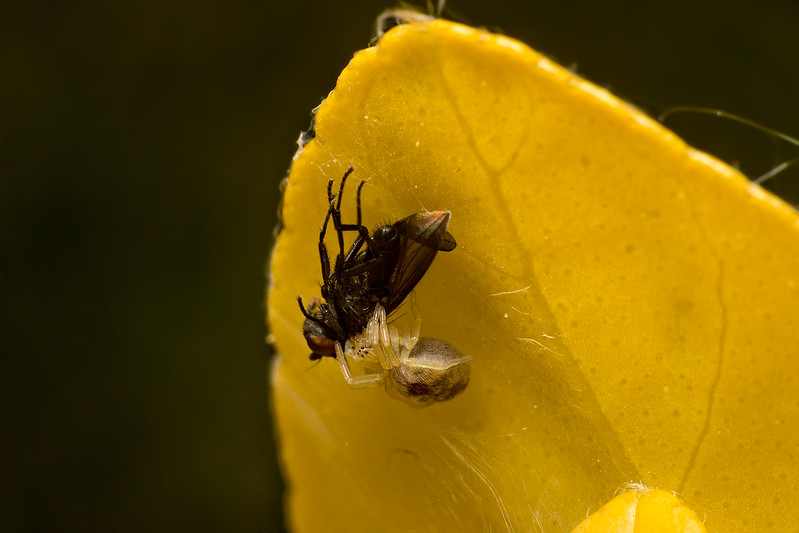
0554 14 2014_05_04 IMG_8959-Edit-Edit PS1 PSS3.128 by gardenersassistant, on Flickr
ISO 320, f/32, 1/250 sec
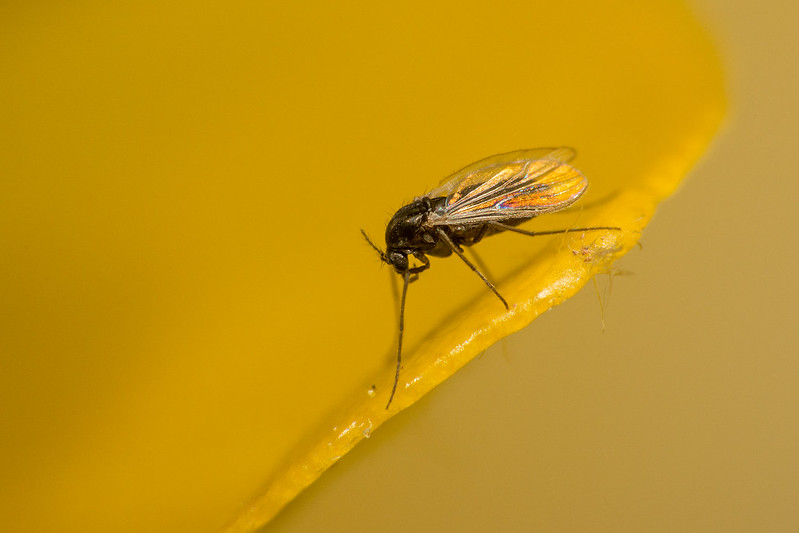
0554 15 2014_05_04 IMG_8855-Edit-2 PS1 PSS3.200 by gardenersassistant, on Flickr
ISO 200, f/29, 1/250 sec
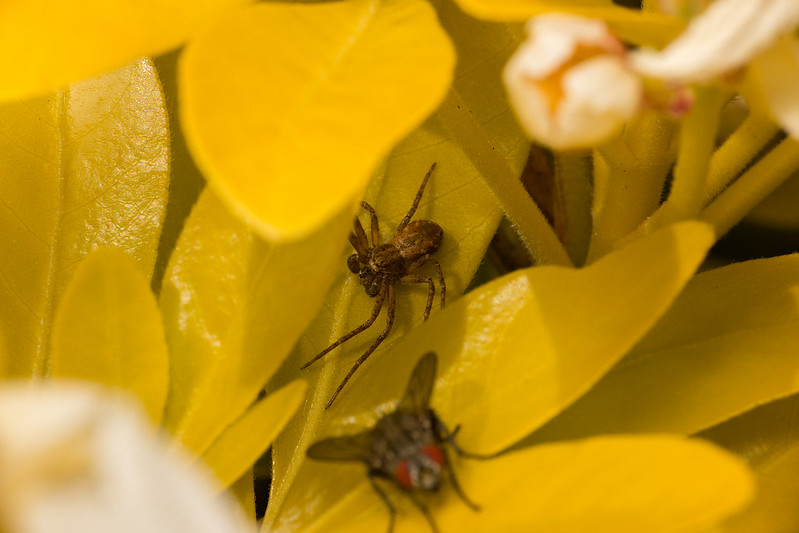
0554 16 2014_05_04 IMG_8961-Edit-2 PS1 PSS3.150 by gardenersassistant, on Flickr
ISO 400, f/32, 1/250 sec
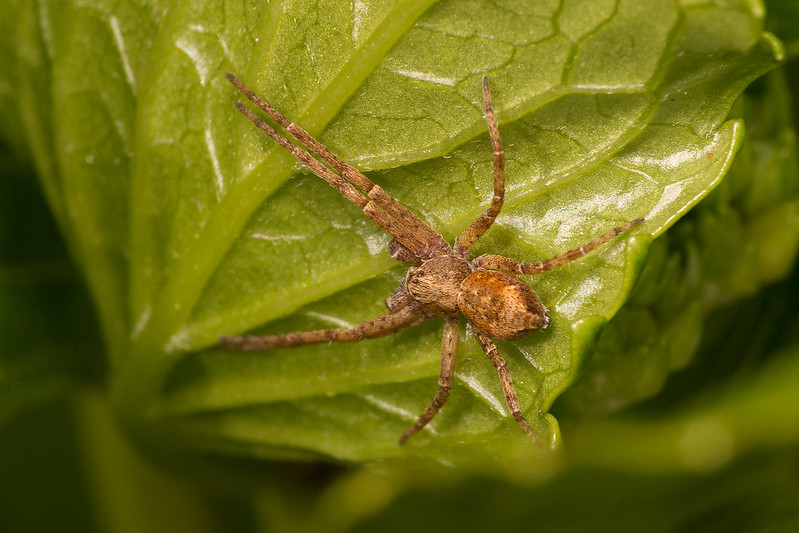
0554 18 2014_05_04 IMG_8974-Edit-3 PS1 PSS3.200 by gardenersassistant, on Flickr
ISO 500, f/32, 1/250 sec

0554 13 2014_05_04 IMG_8785-Edit PS1 PSS3.200 by gardenersassistant, on Flickr
ISO 200, f/29. 1/250 sec

0554 14 2014_05_04 IMG_8959-Edit-Edit PS1 PSS3.128 by gardenersassistant, on Flickr
ISO 320, f/32, 1/250 sec

0554 15 2014_05_04 IMG_8855-Edit-2 PS1 PSS3.200 by gardenersassistant, on Flickr
ISO 200, f/29, 1/250 sec

0554 16 2014_05_04 IMG_8961-Edit-2 PS1 PSS3.150 by gardenersassistant, on Flickr
ISO 400, f/32, 1/250 sec

0554 18 2014_05_04 IMG_8974-Edit-3 PS1 PSS3.200 by gardenersassistant, on Flickr

